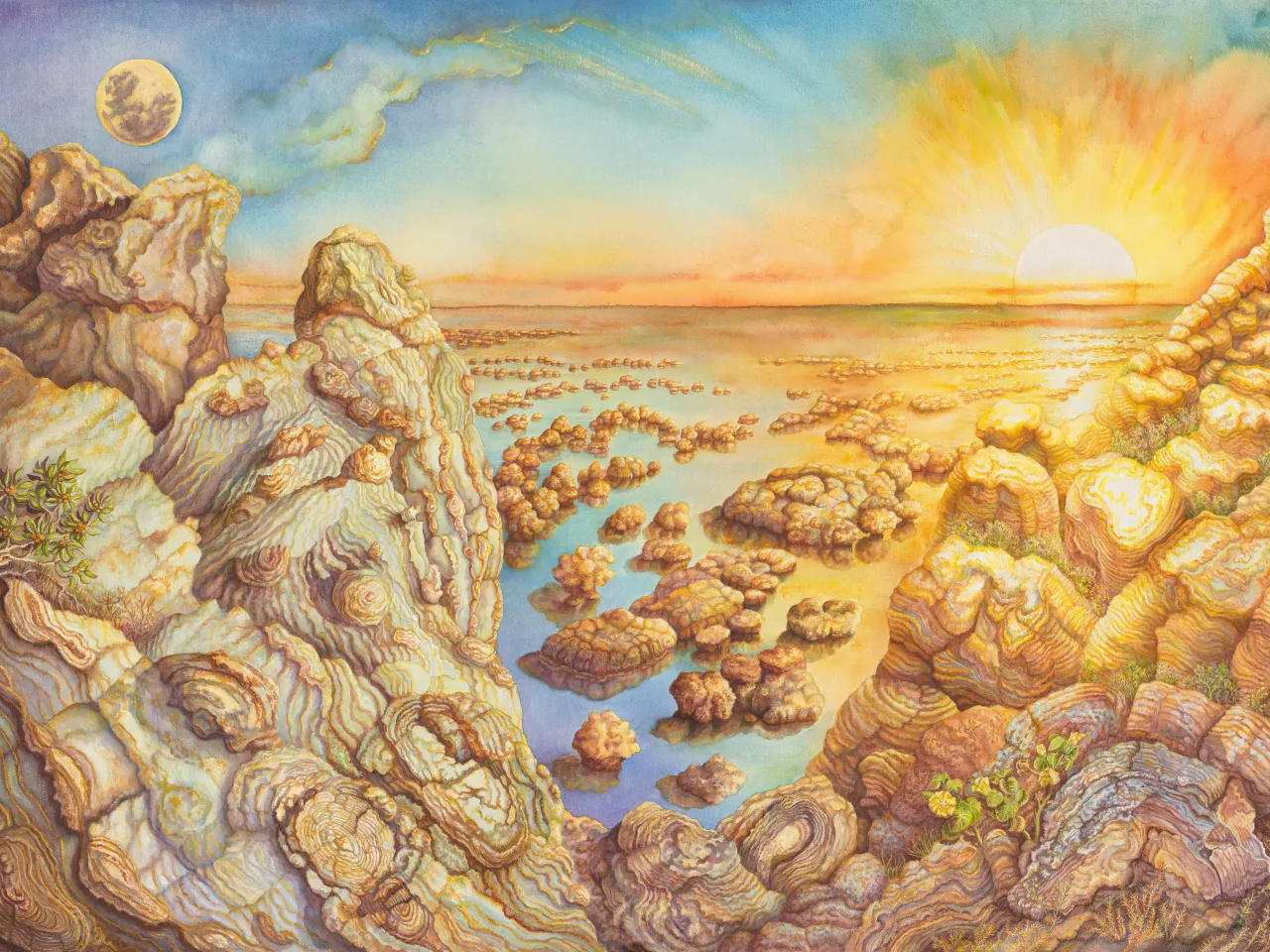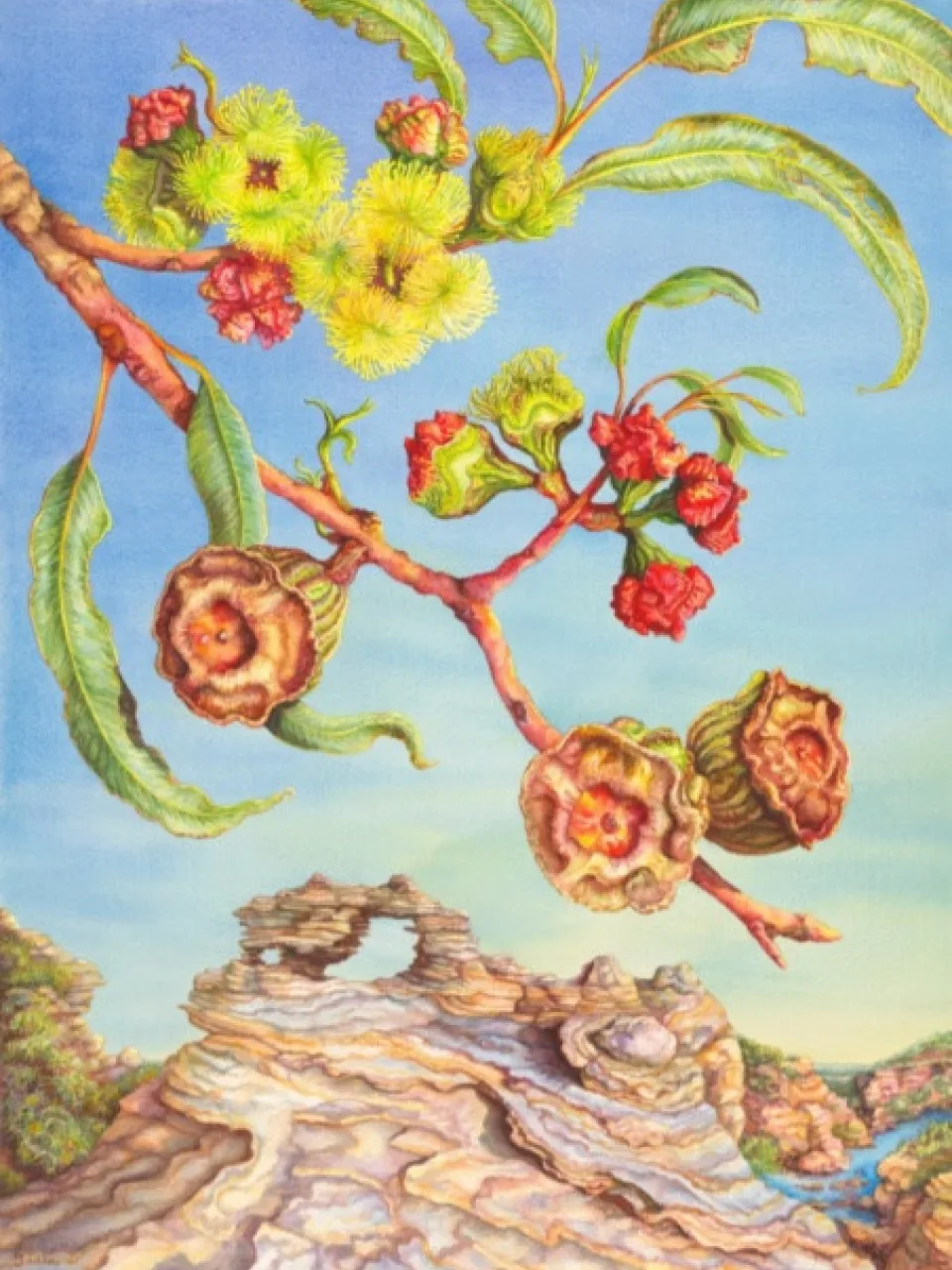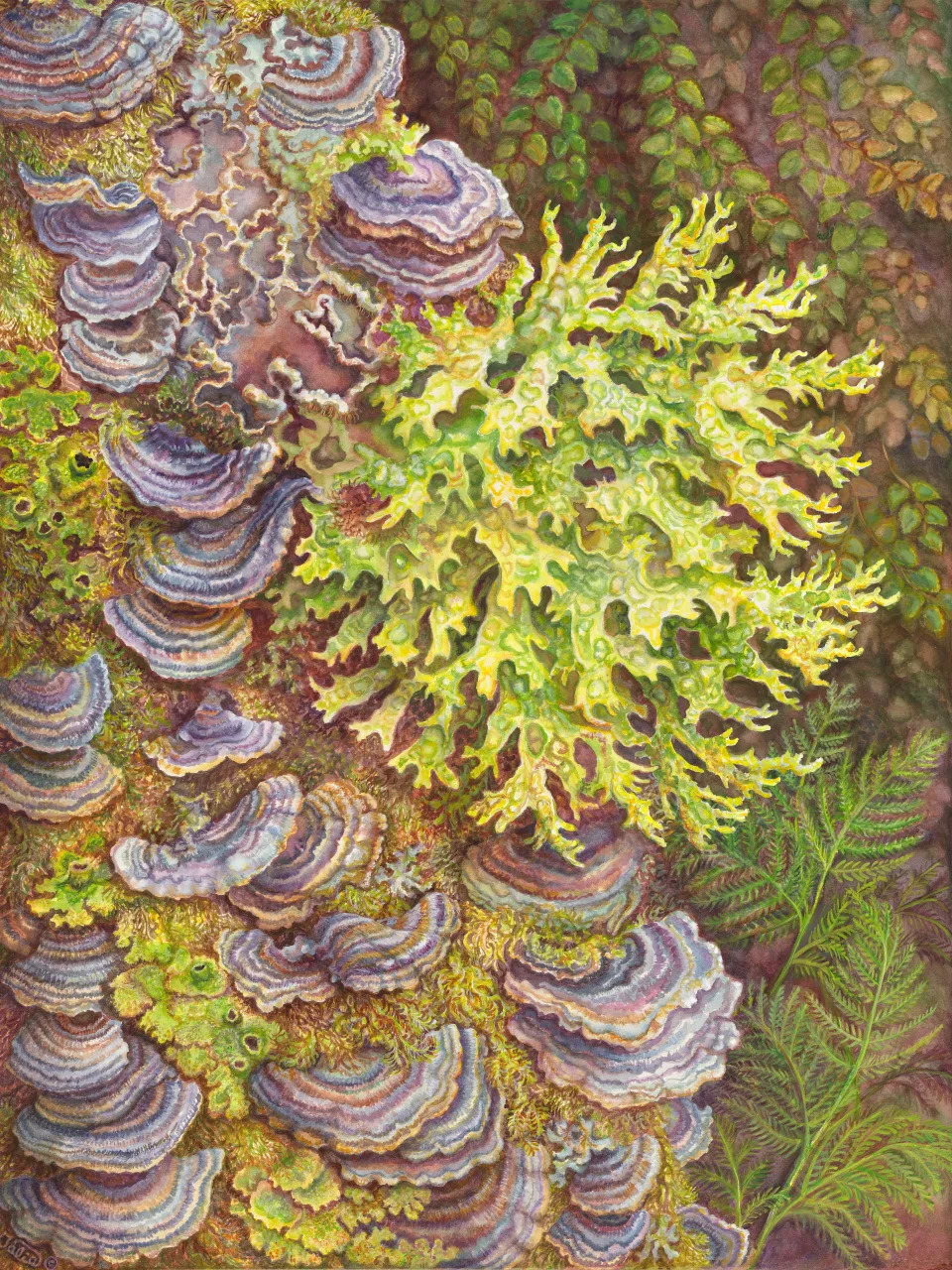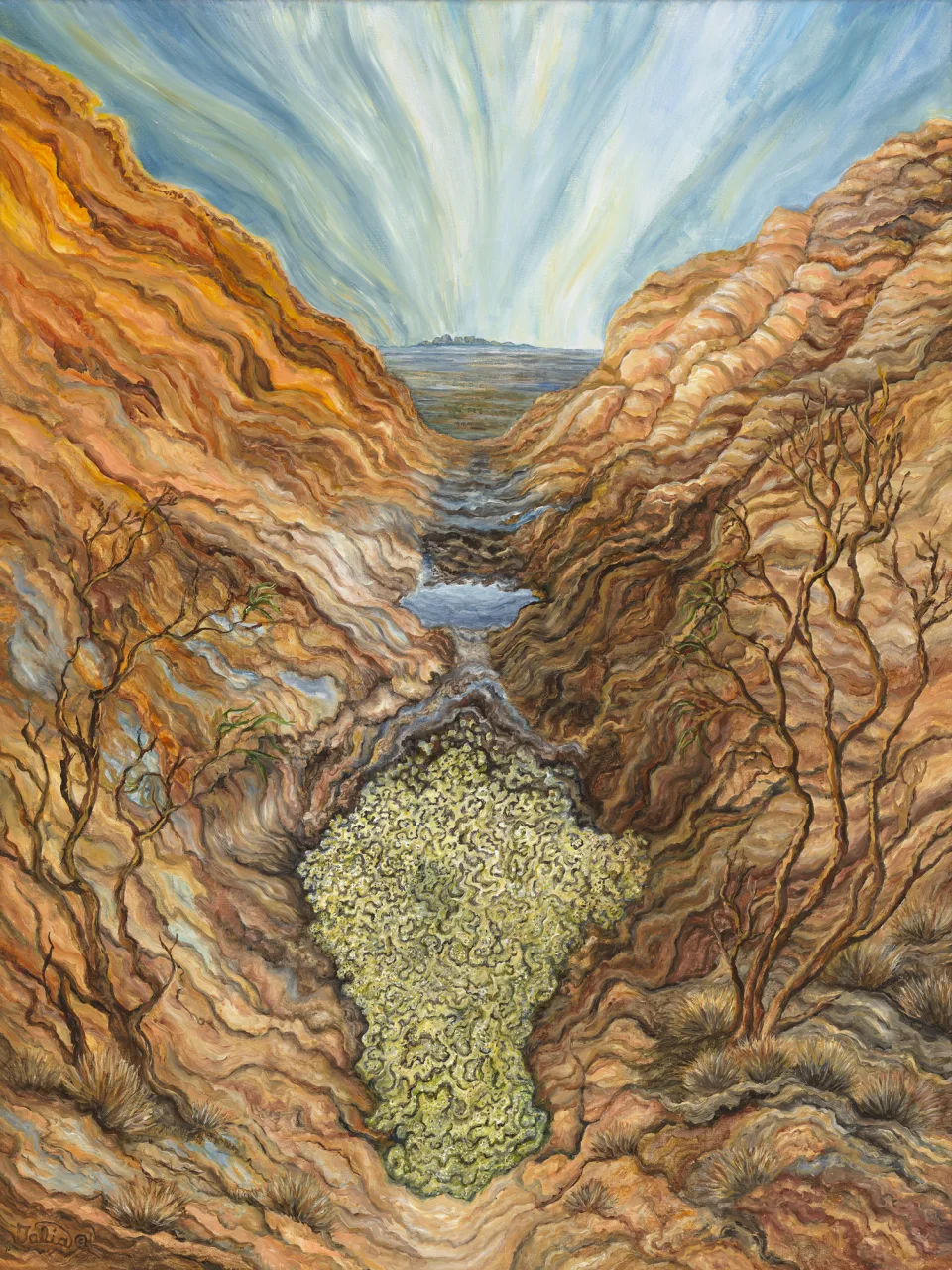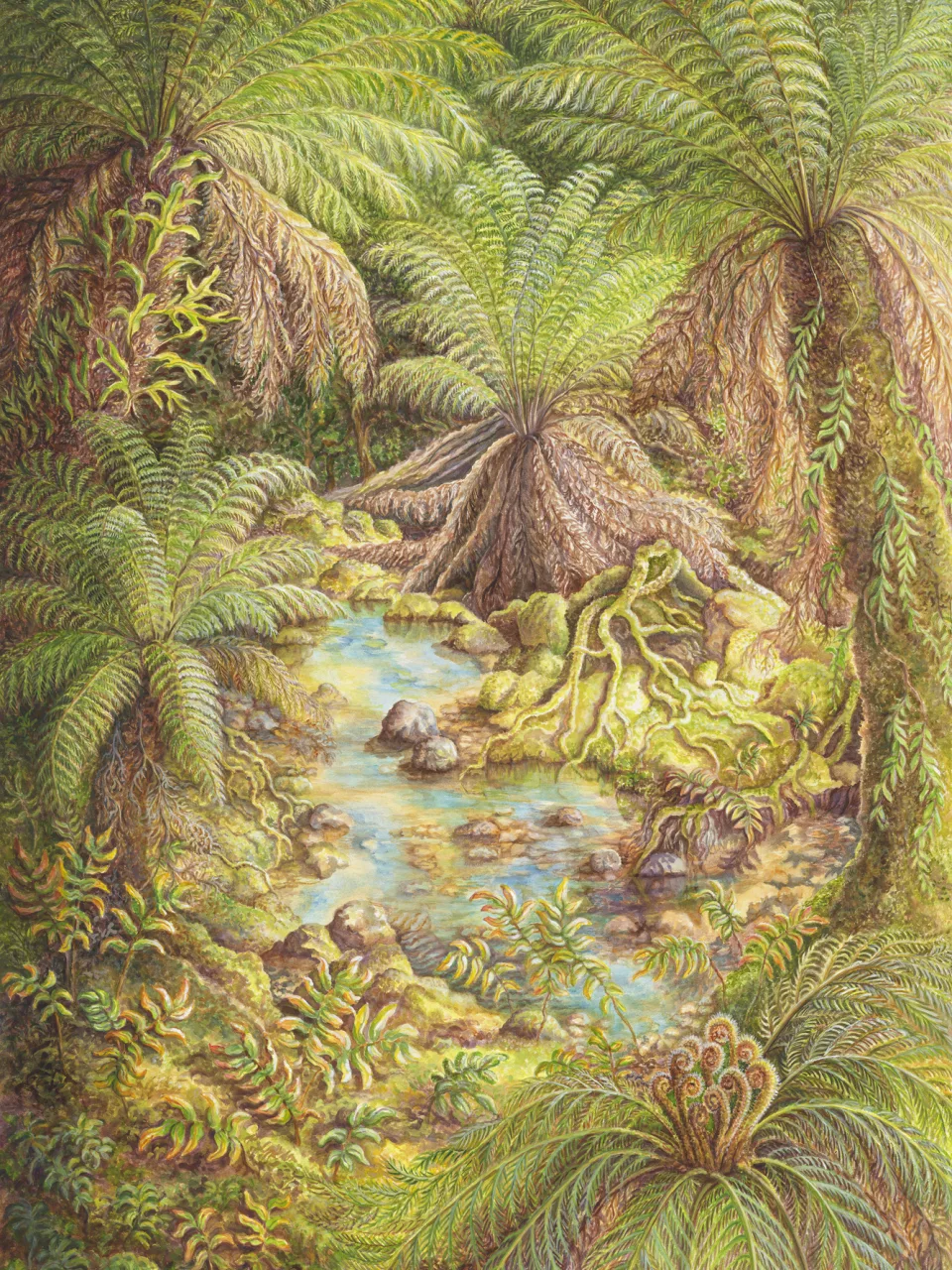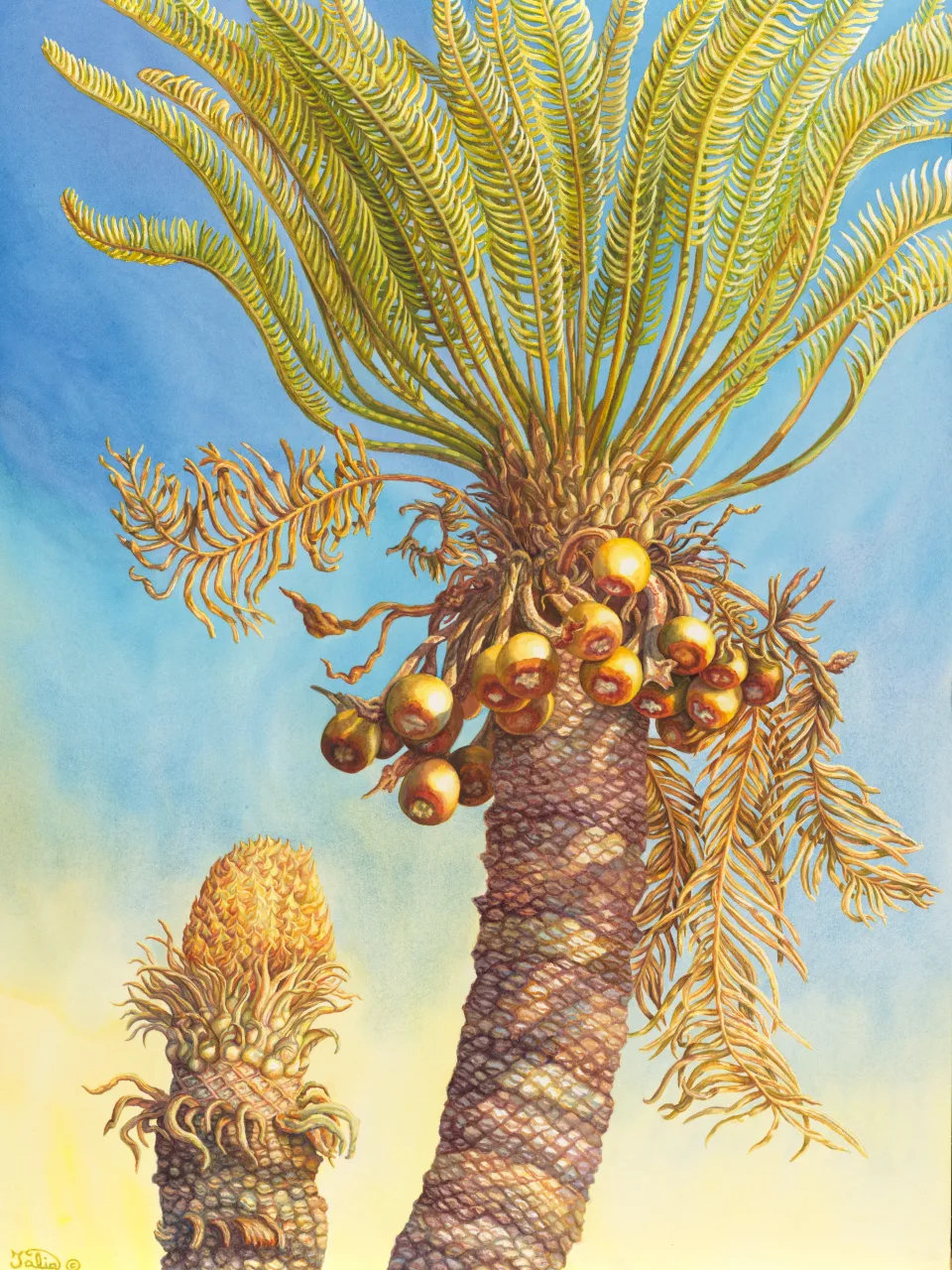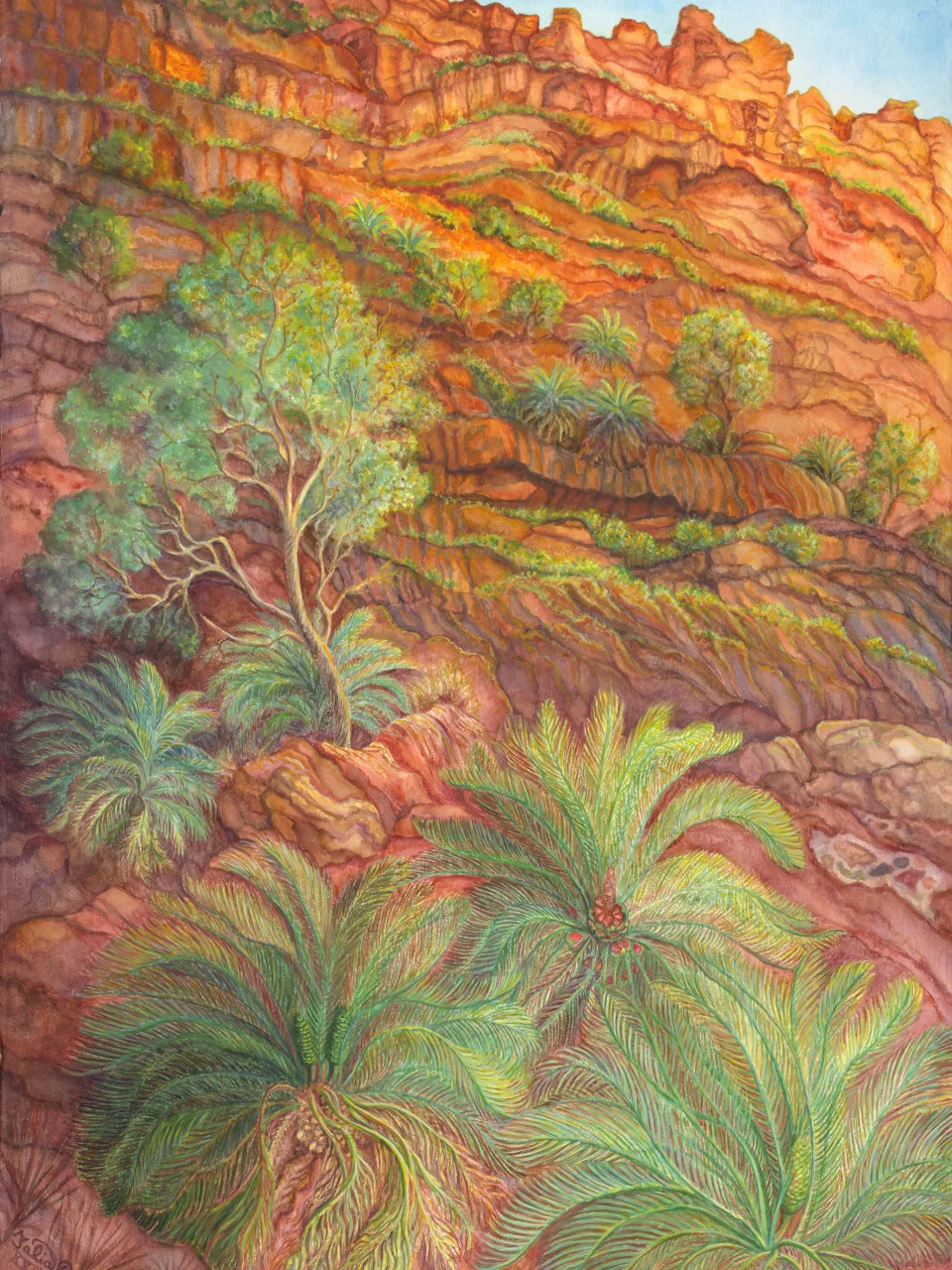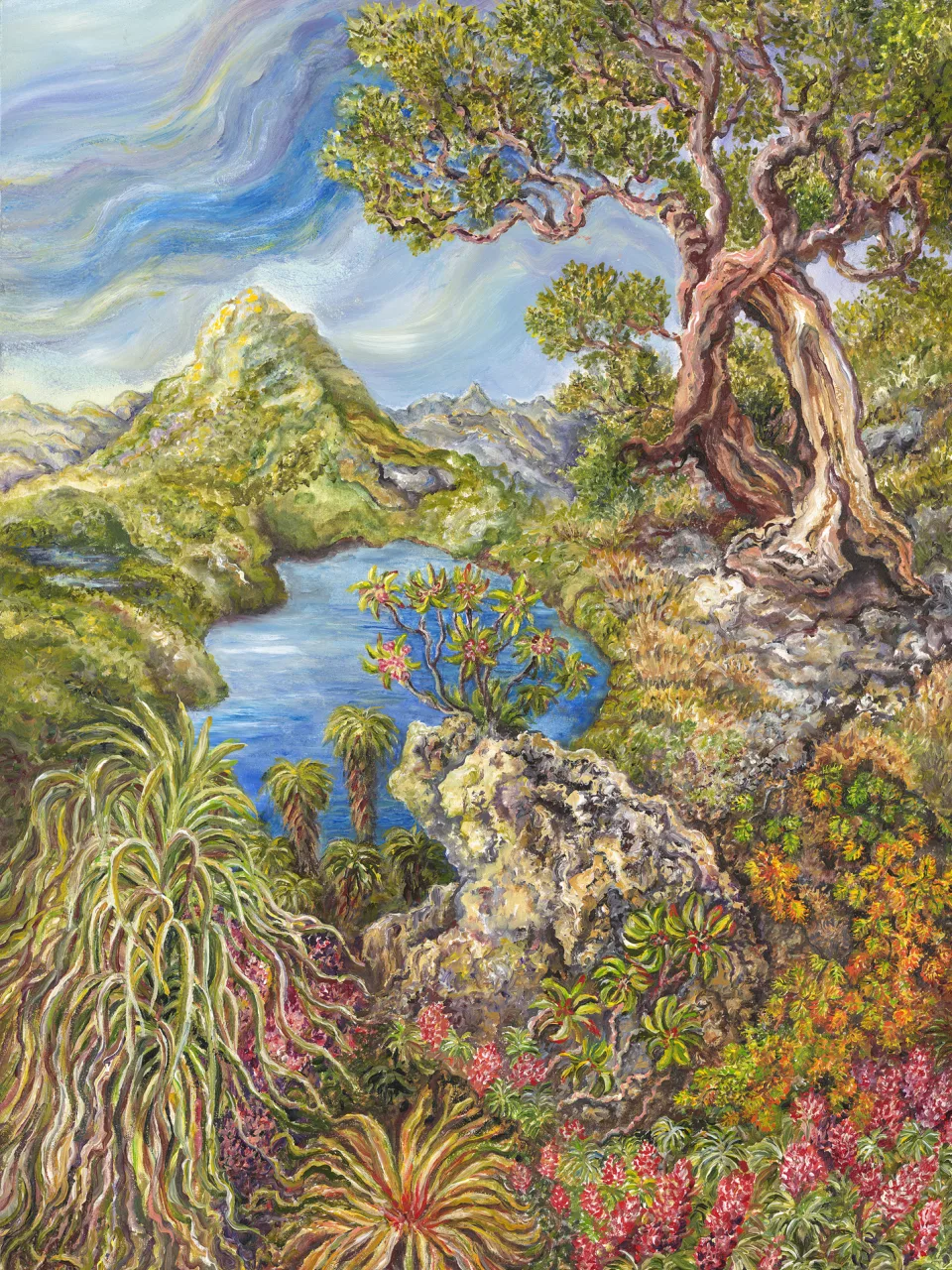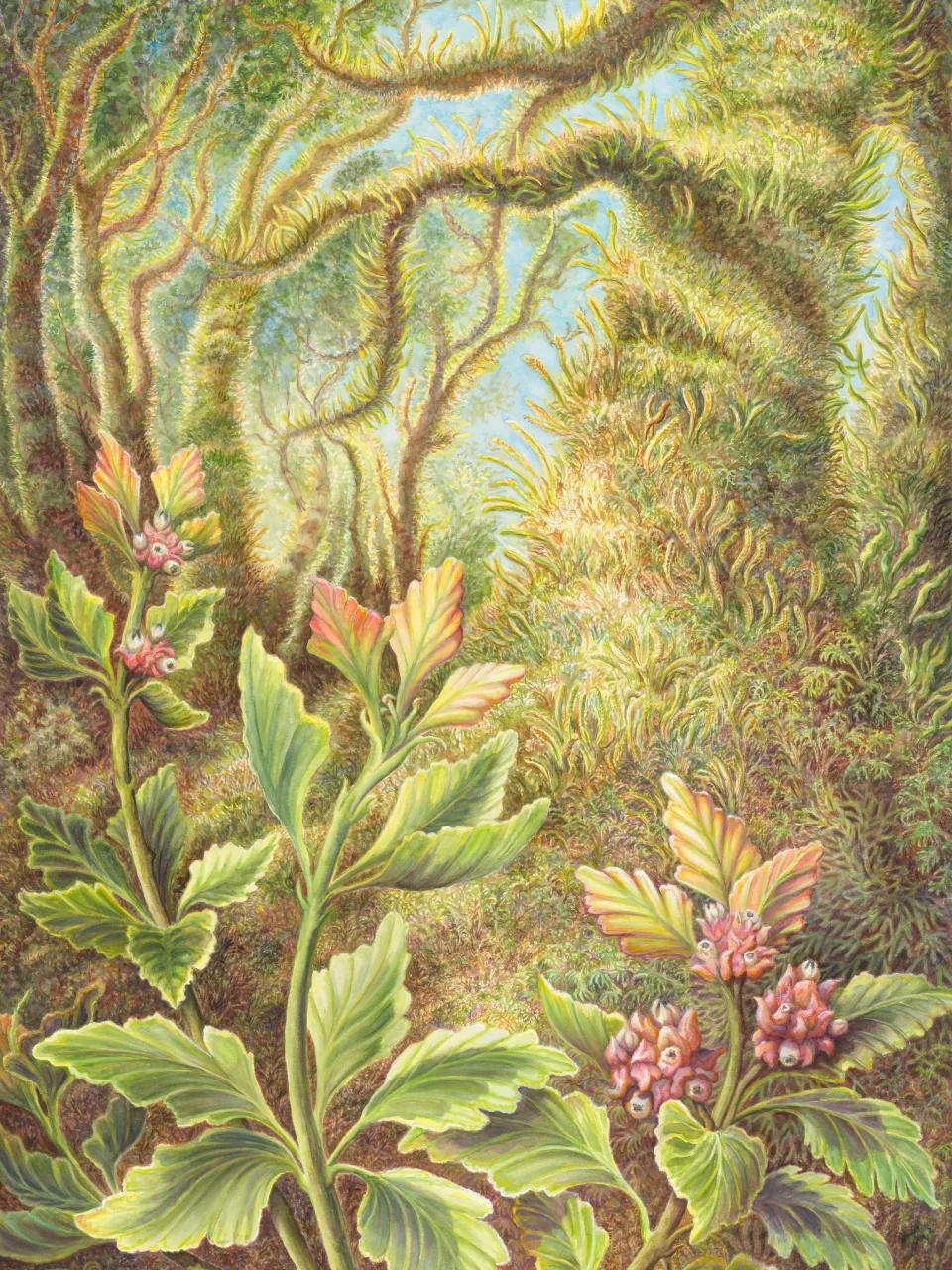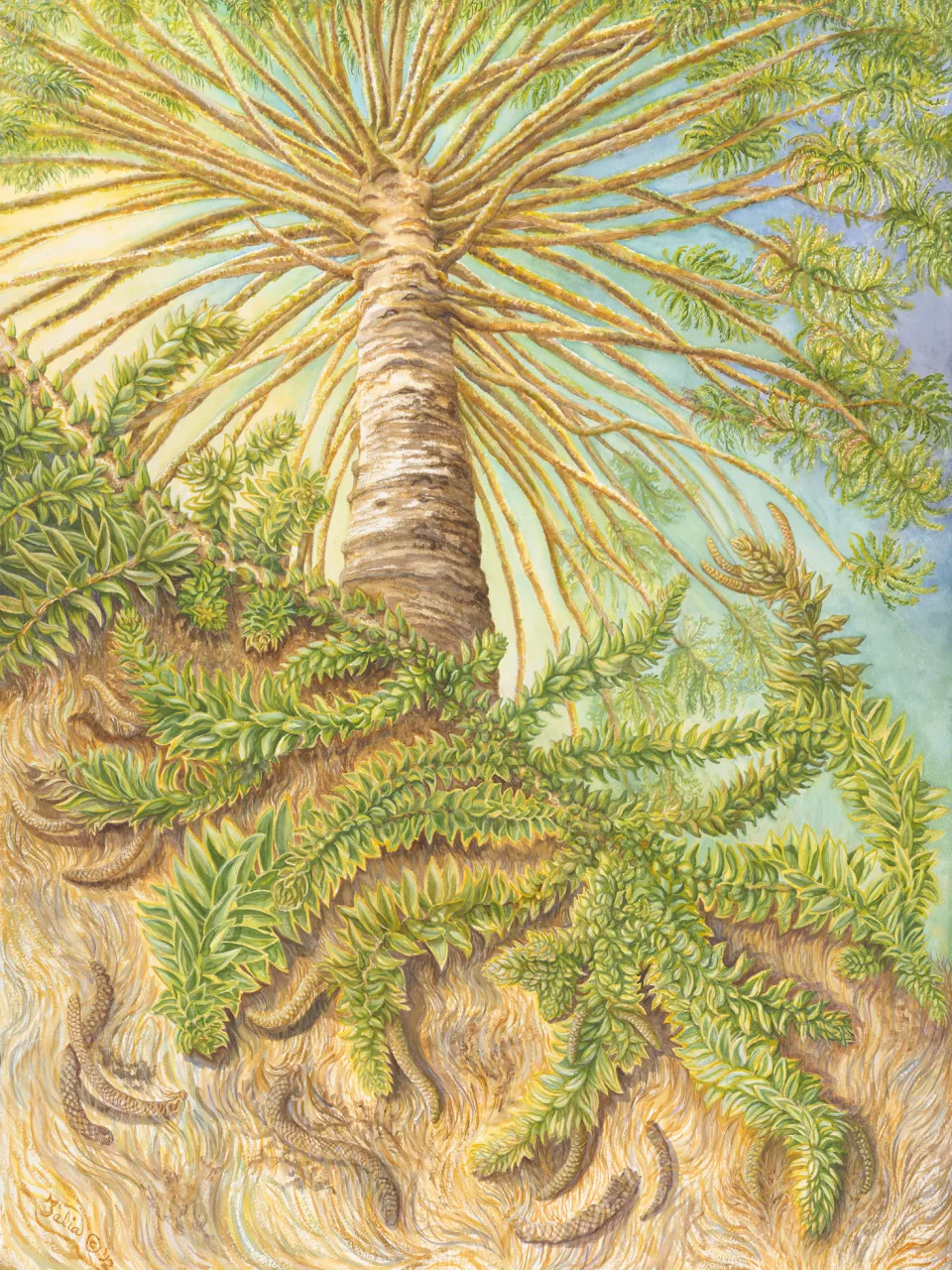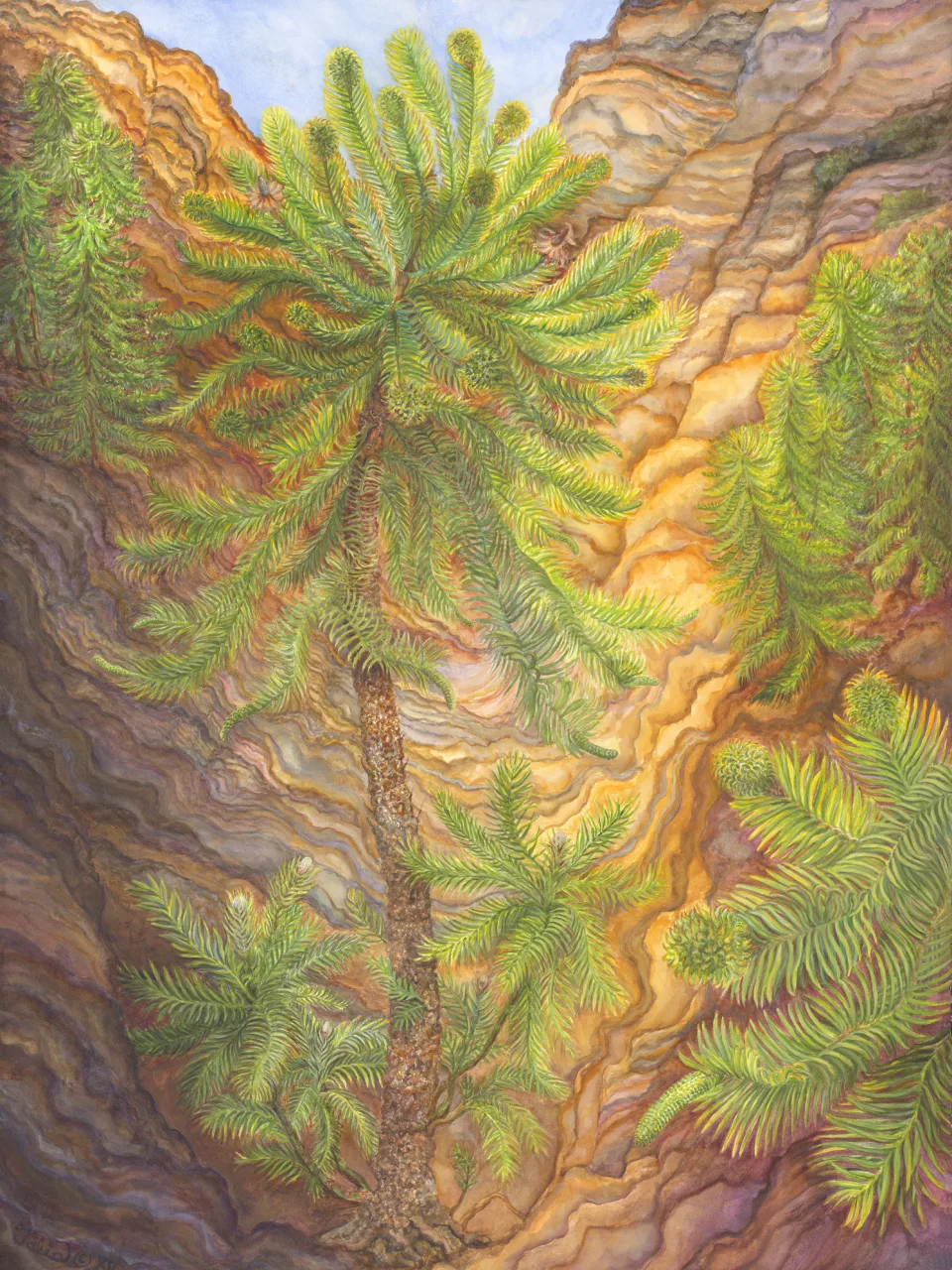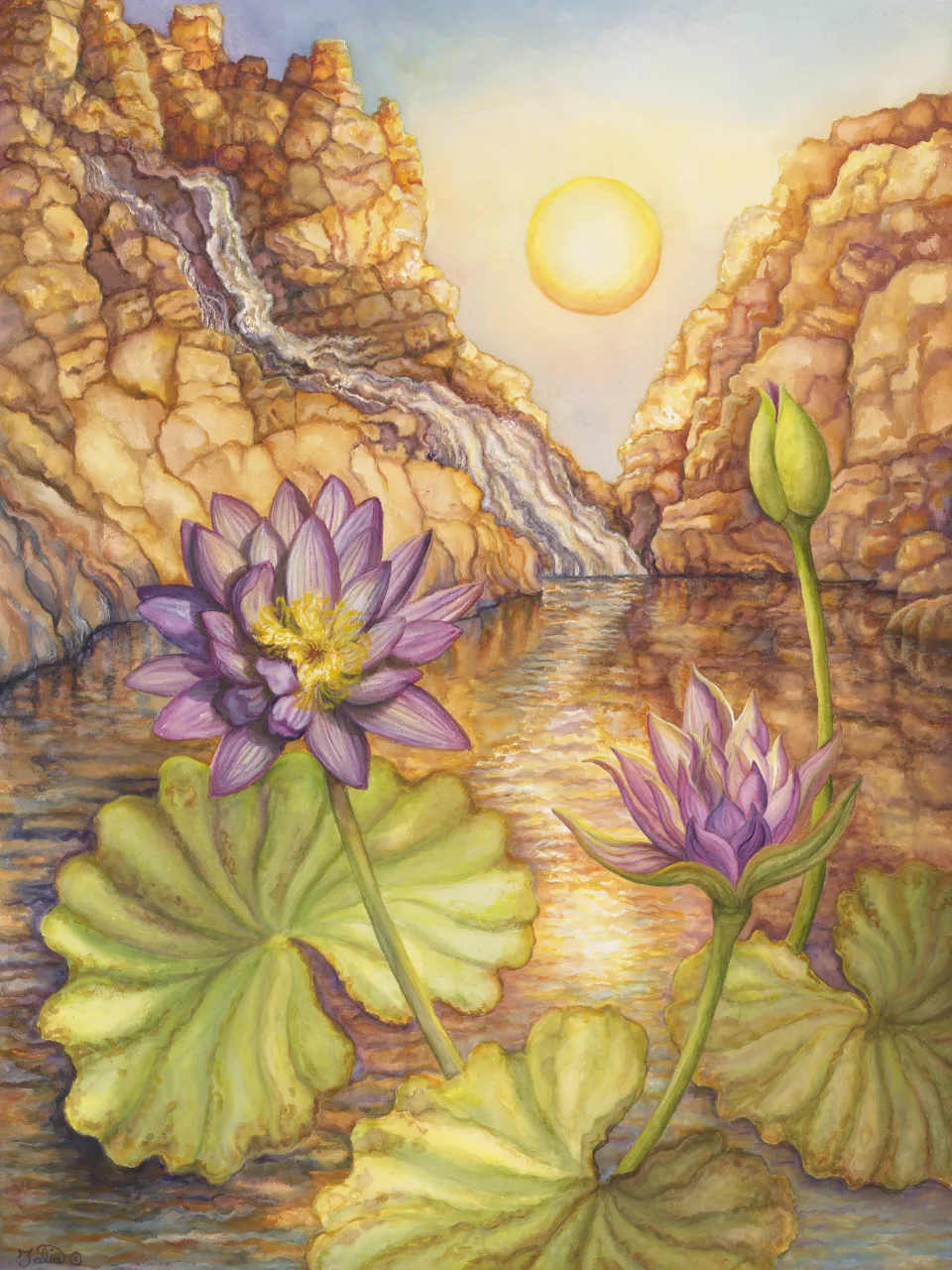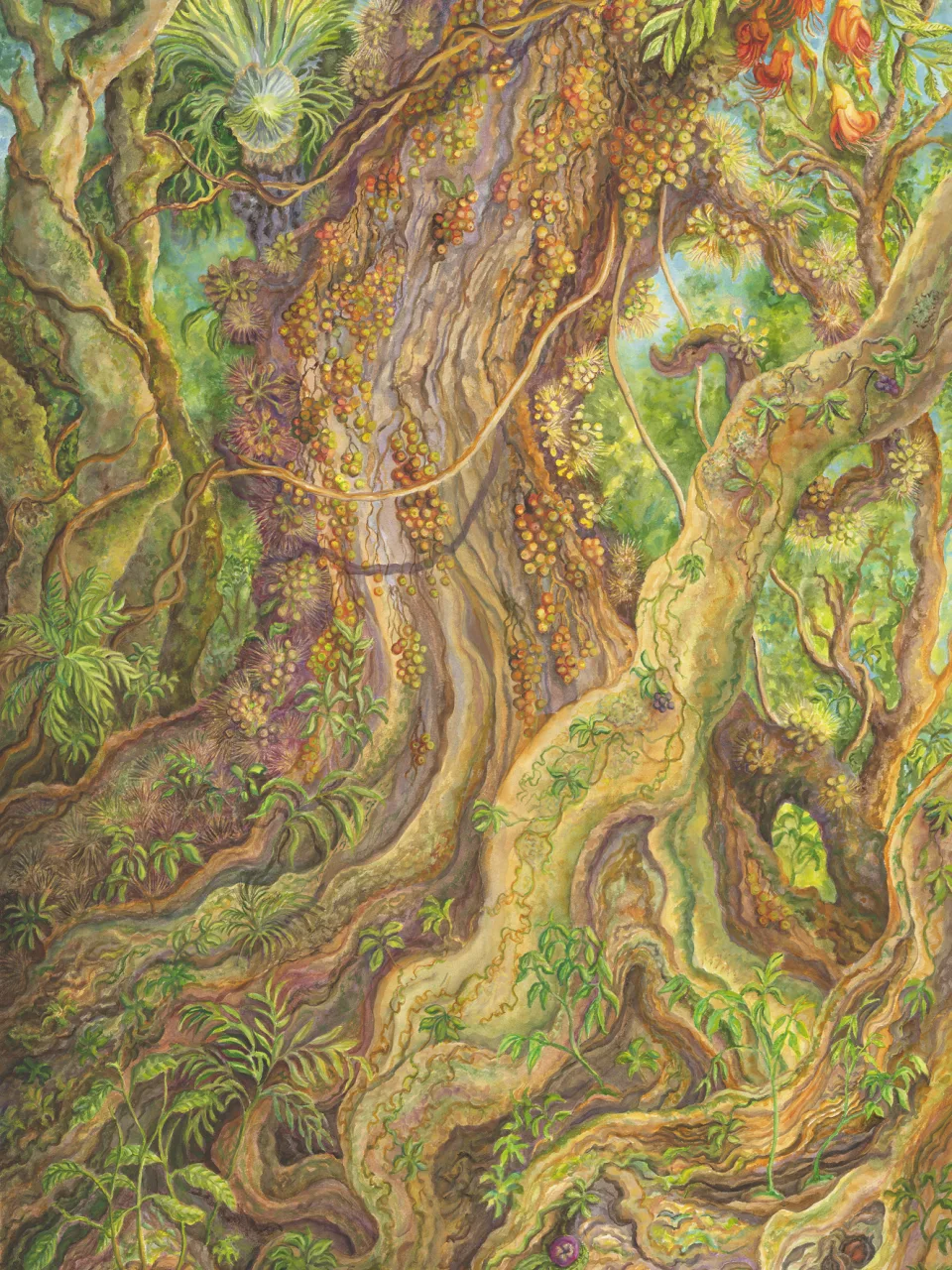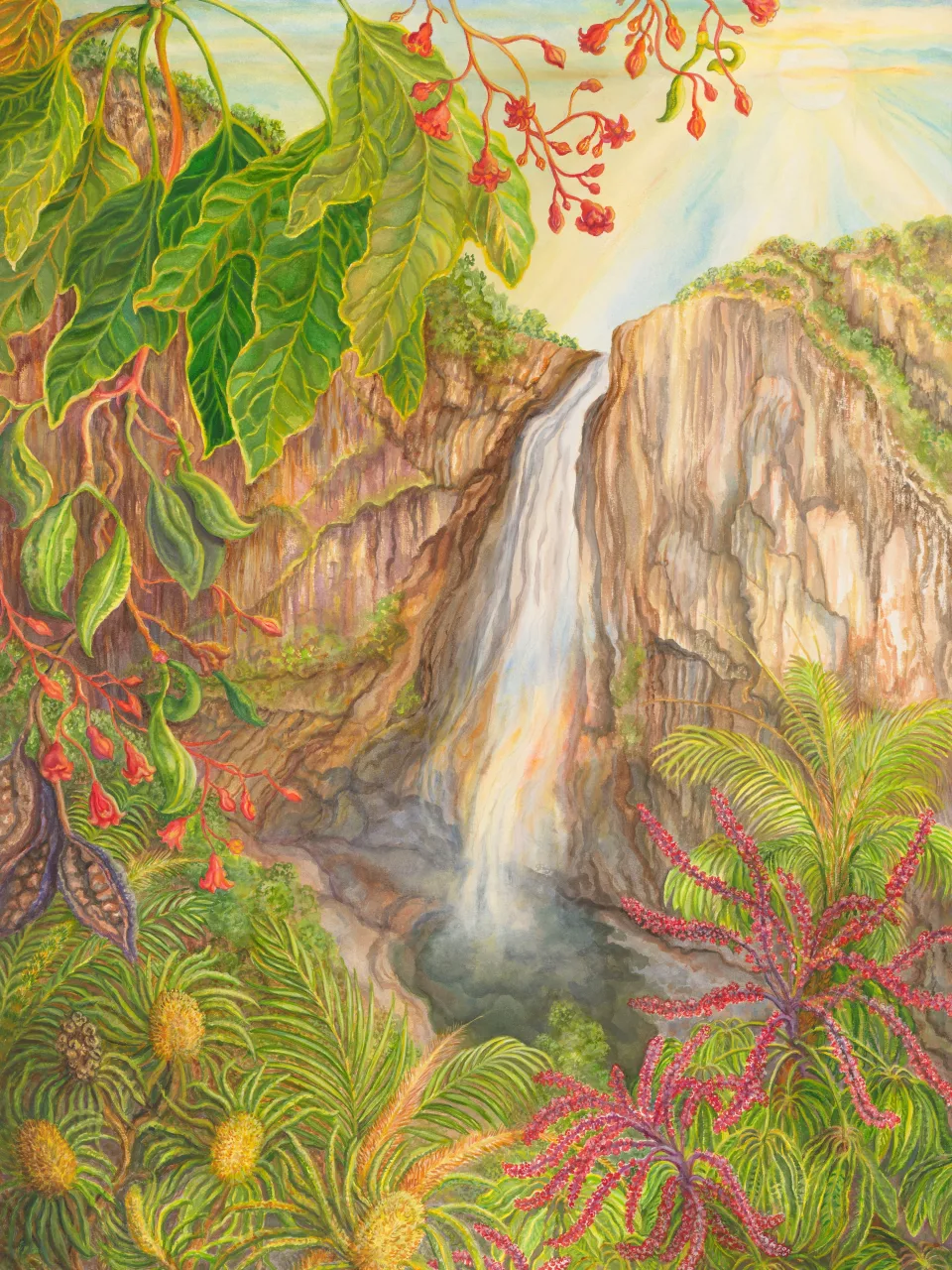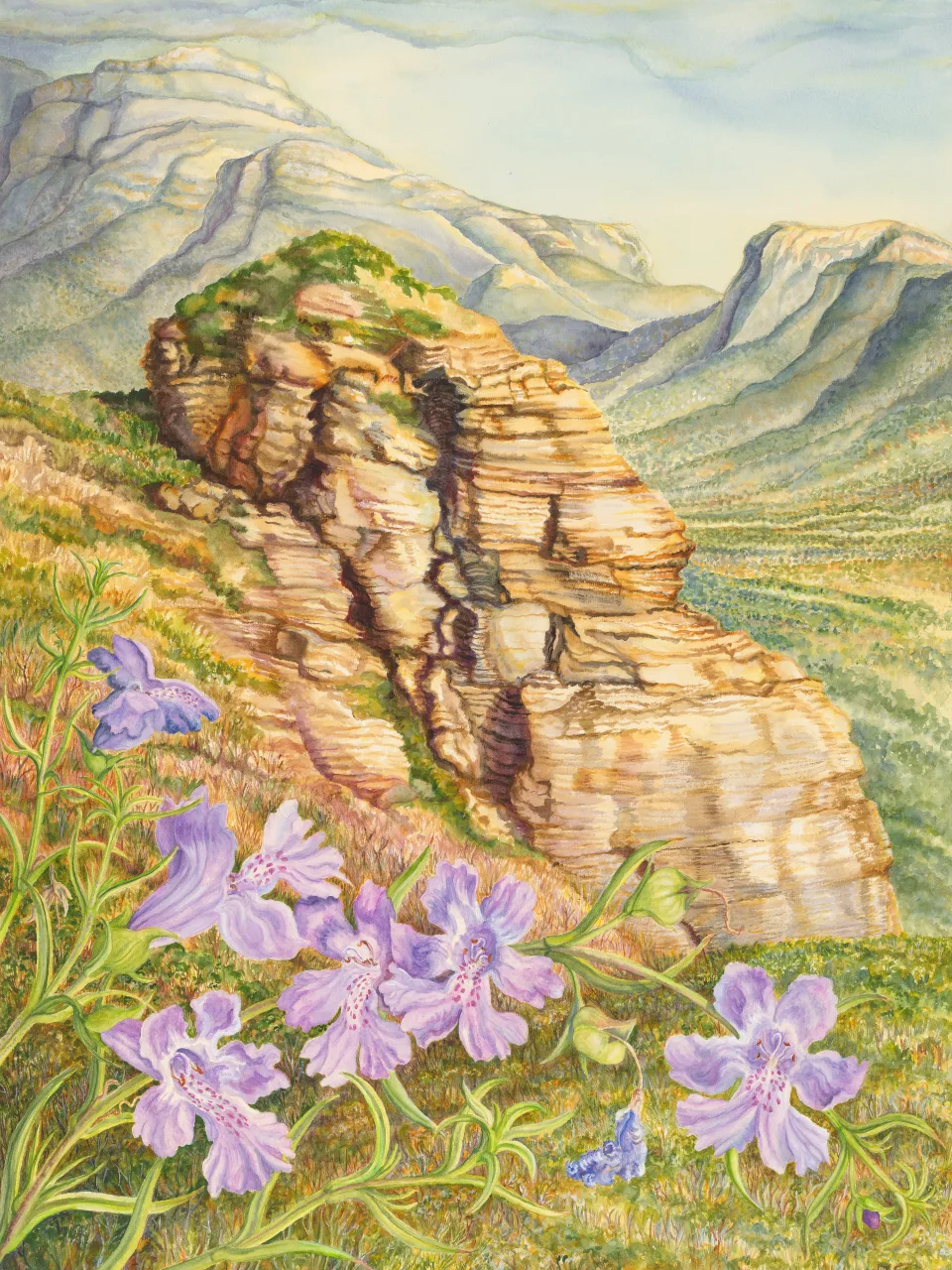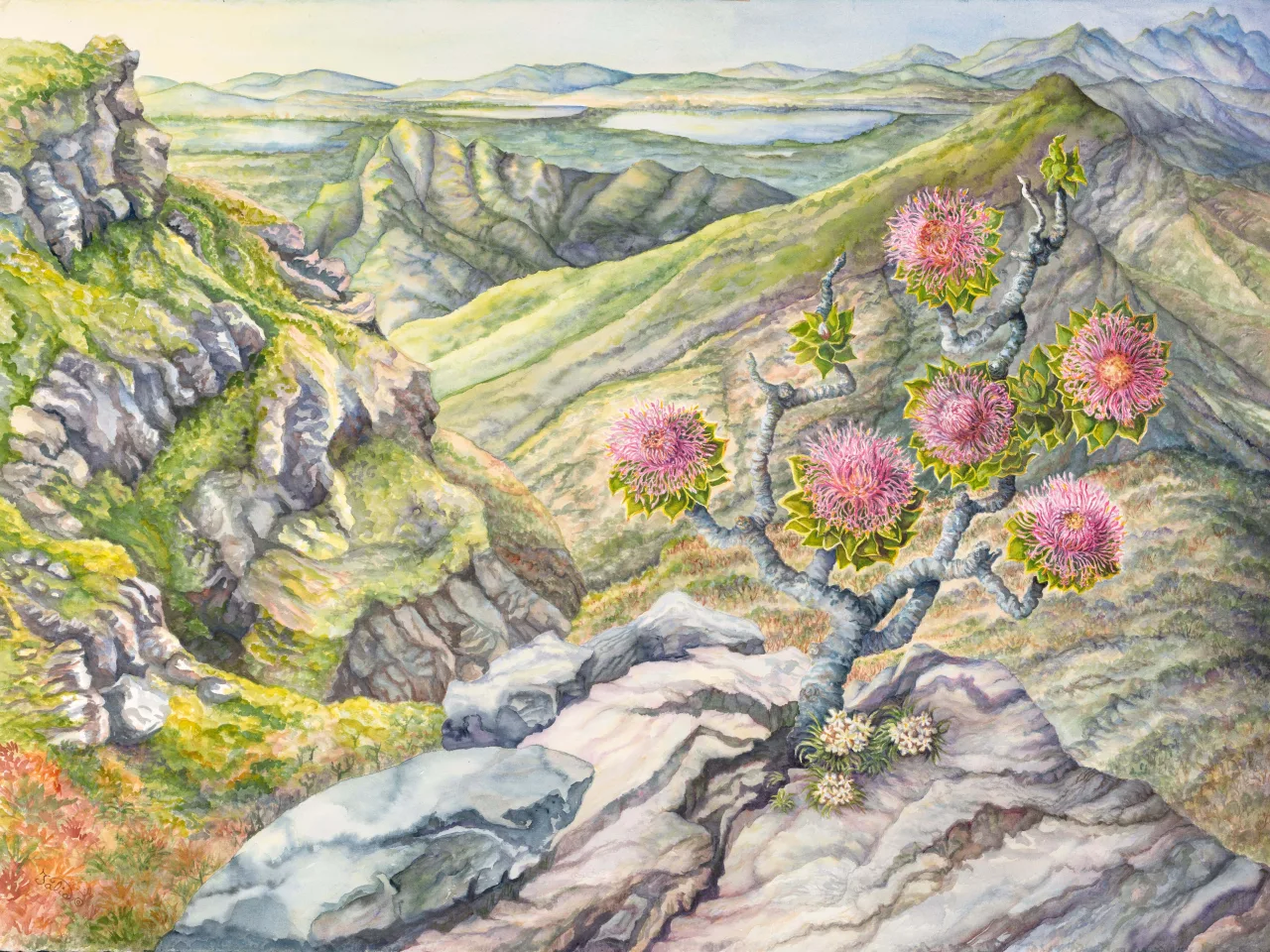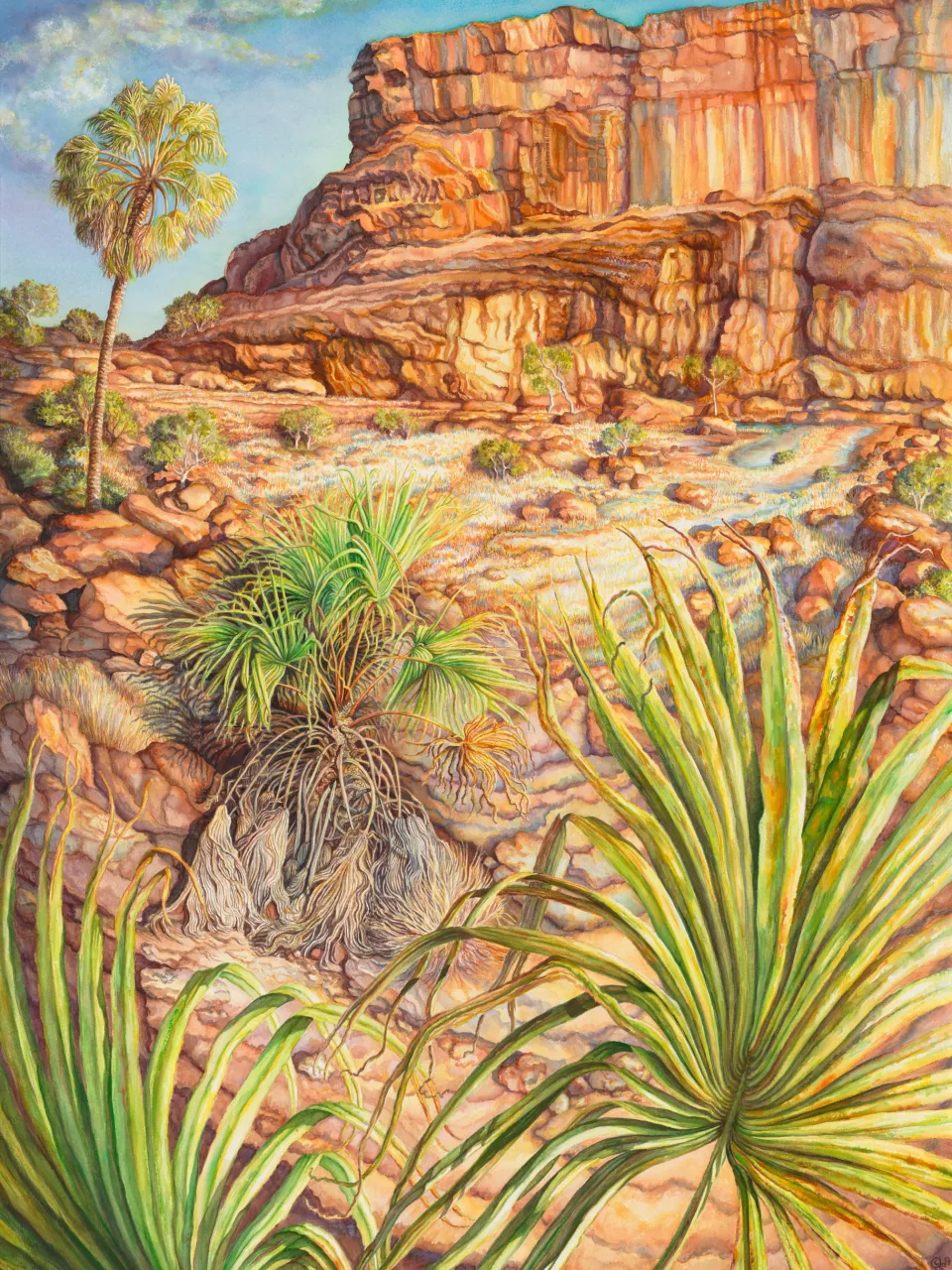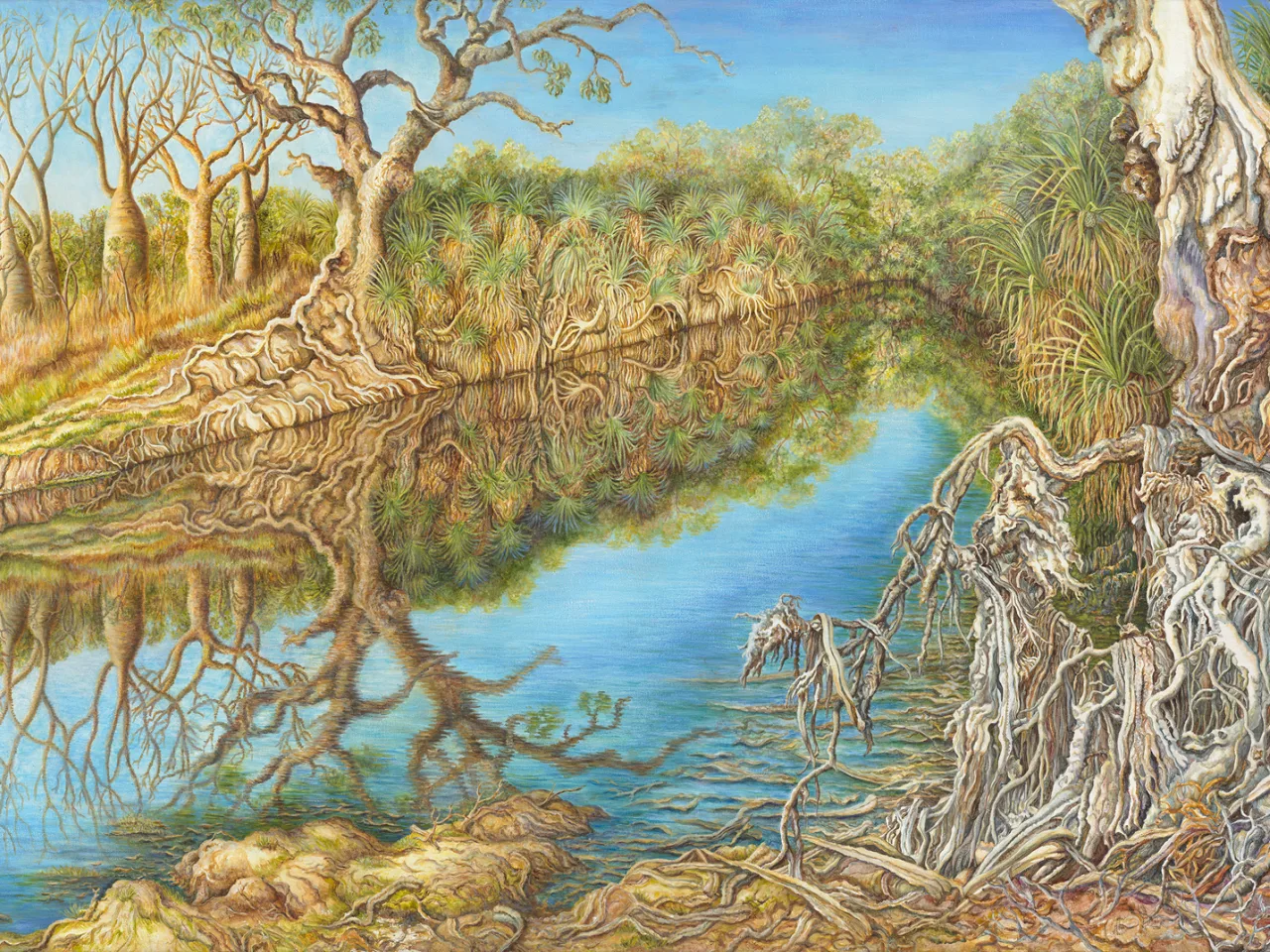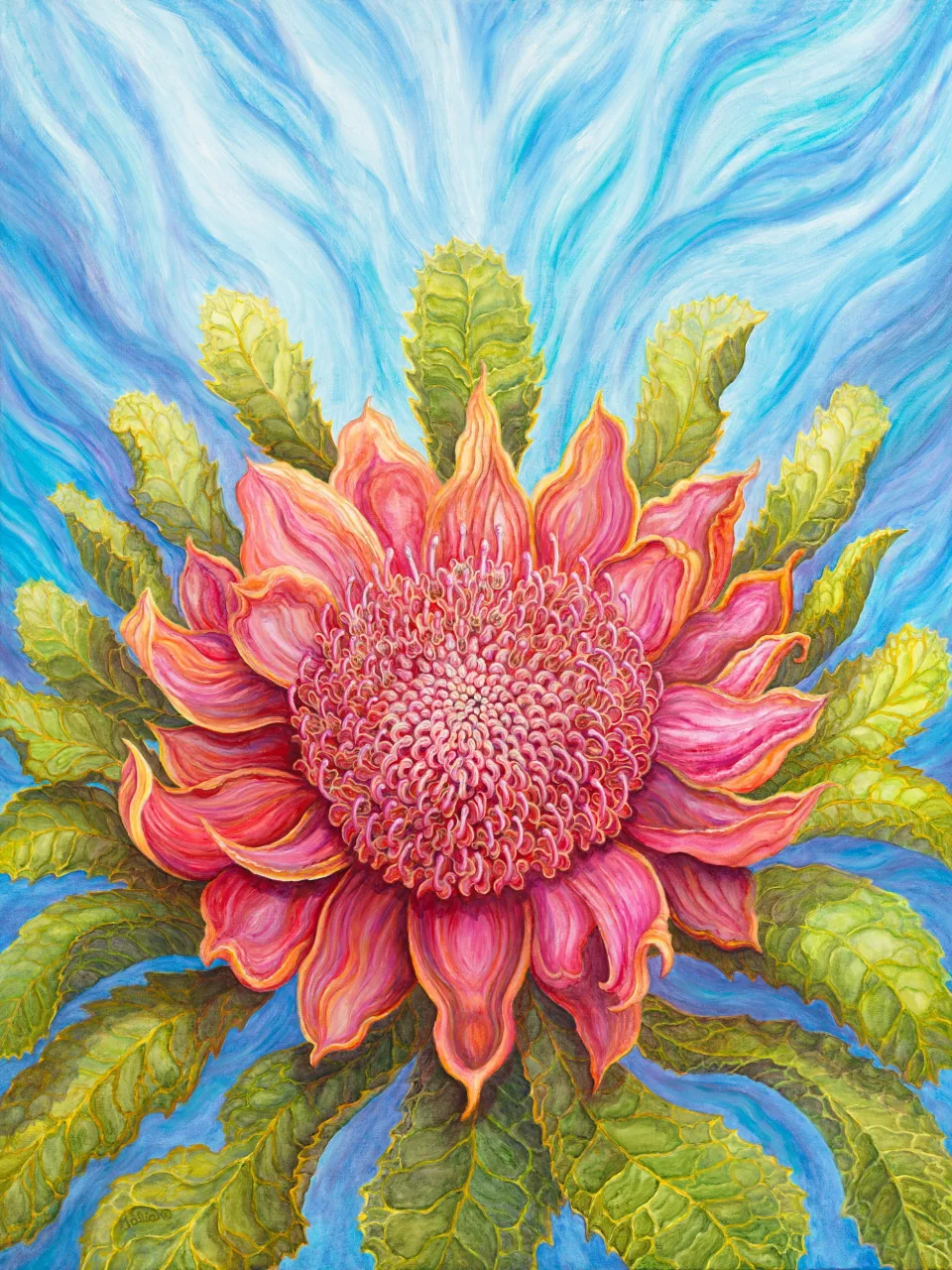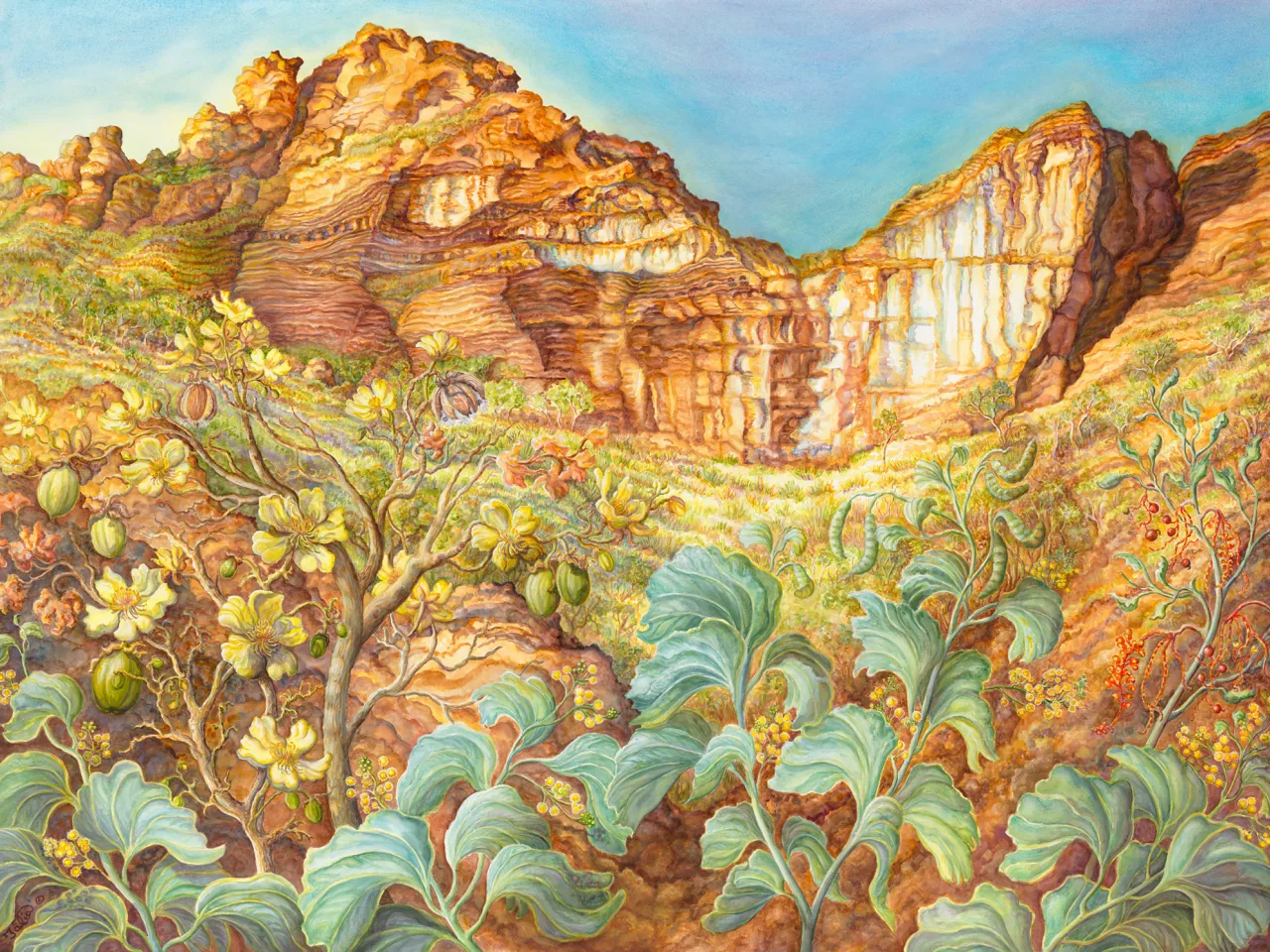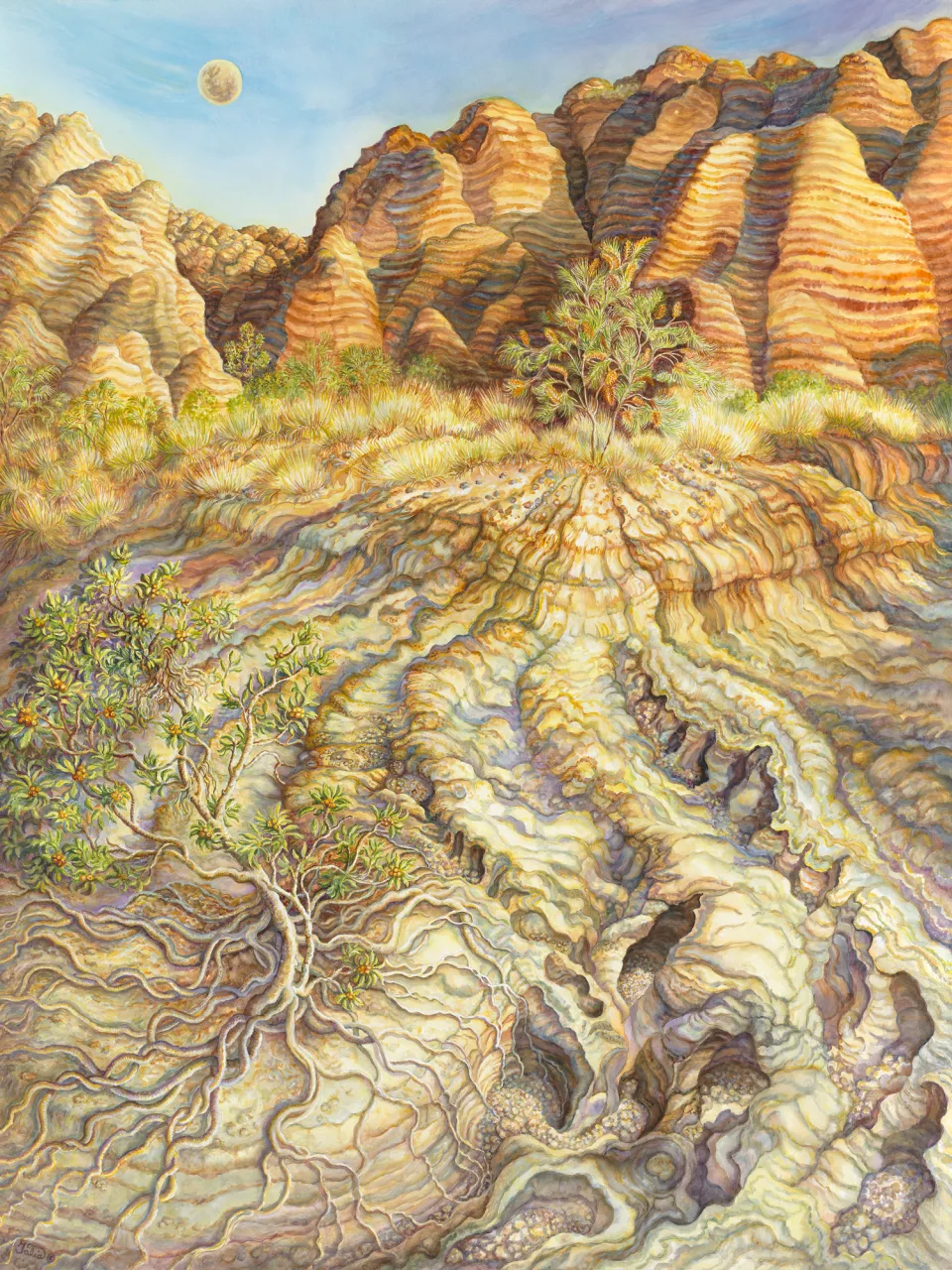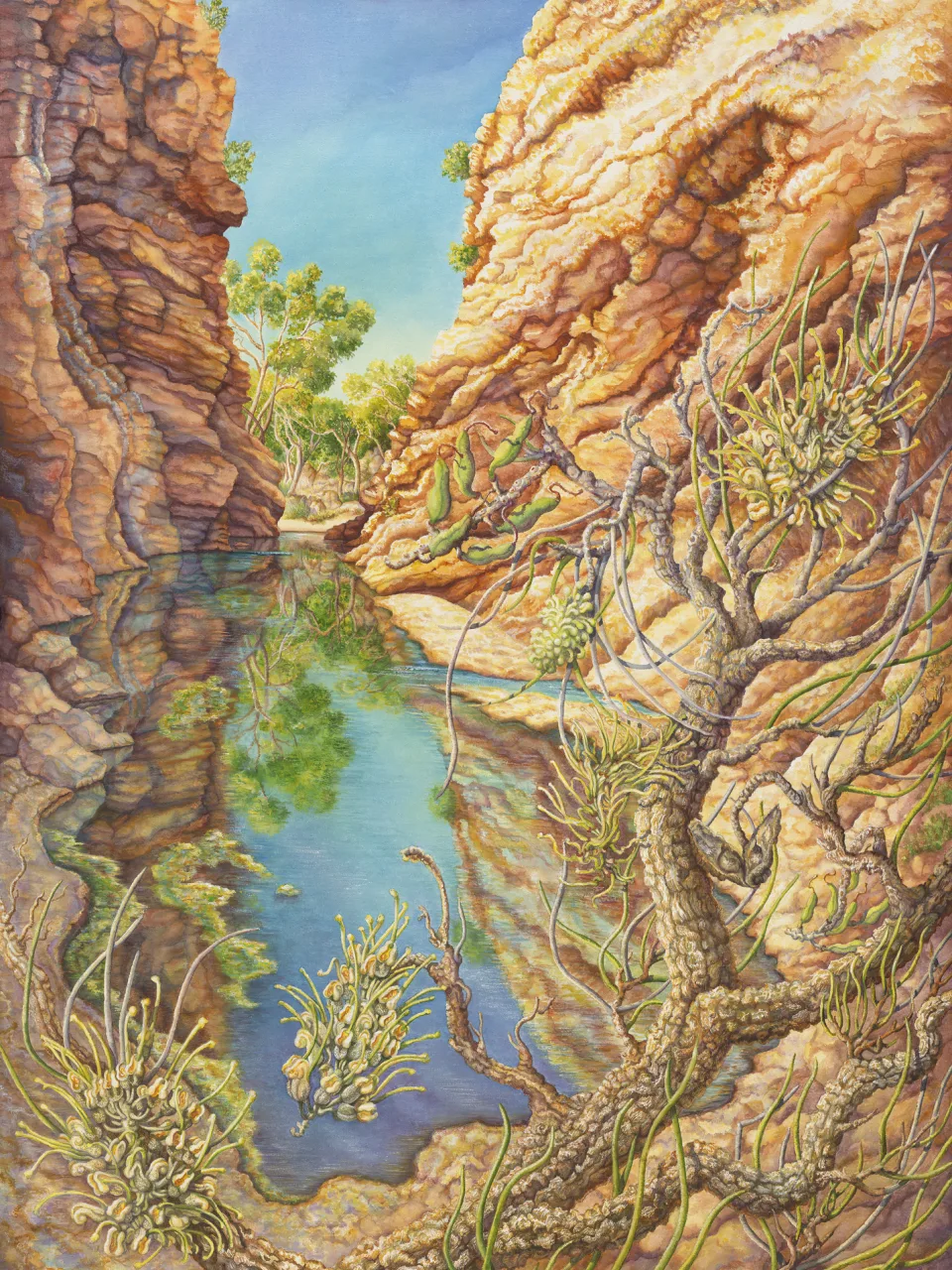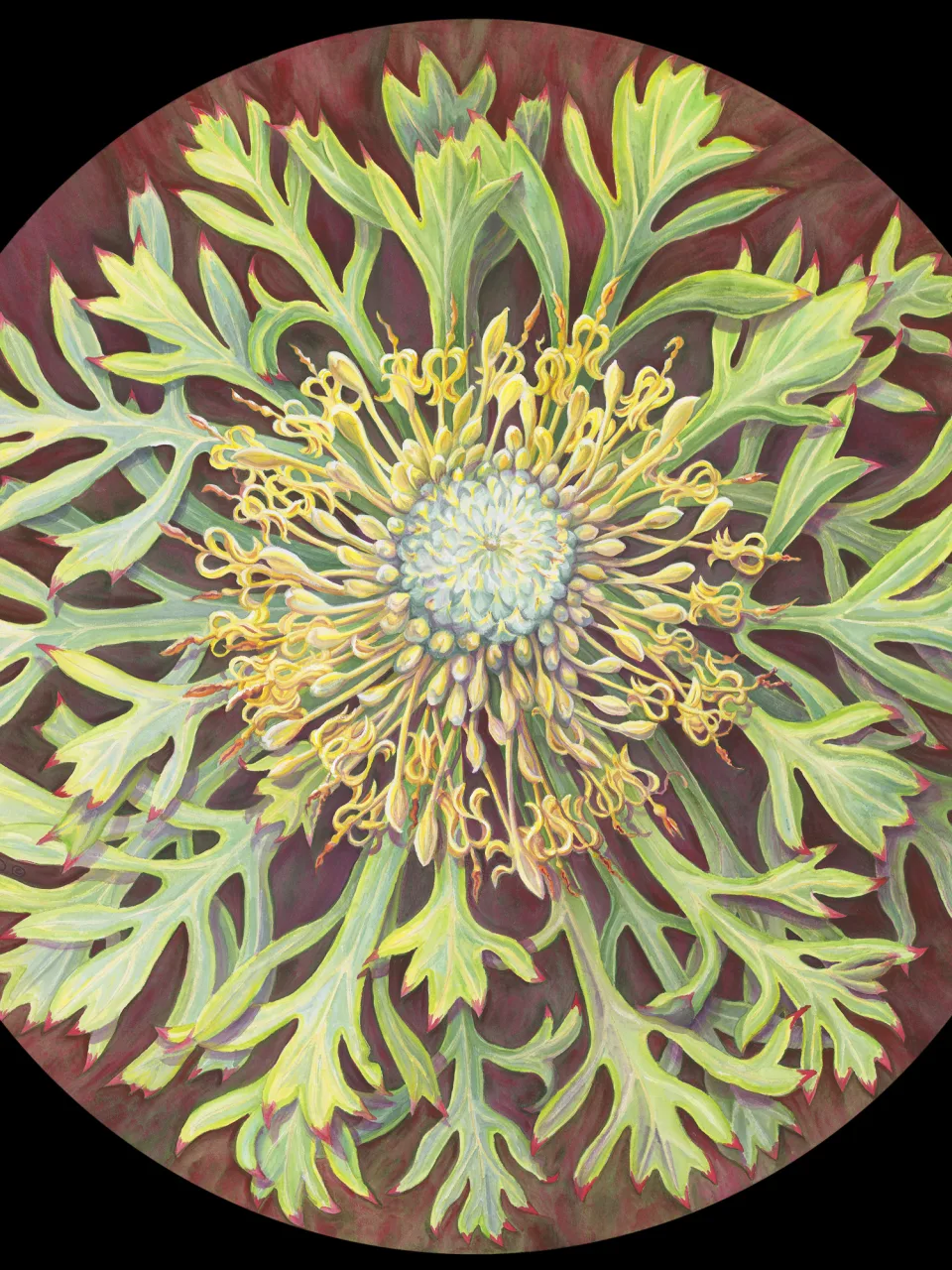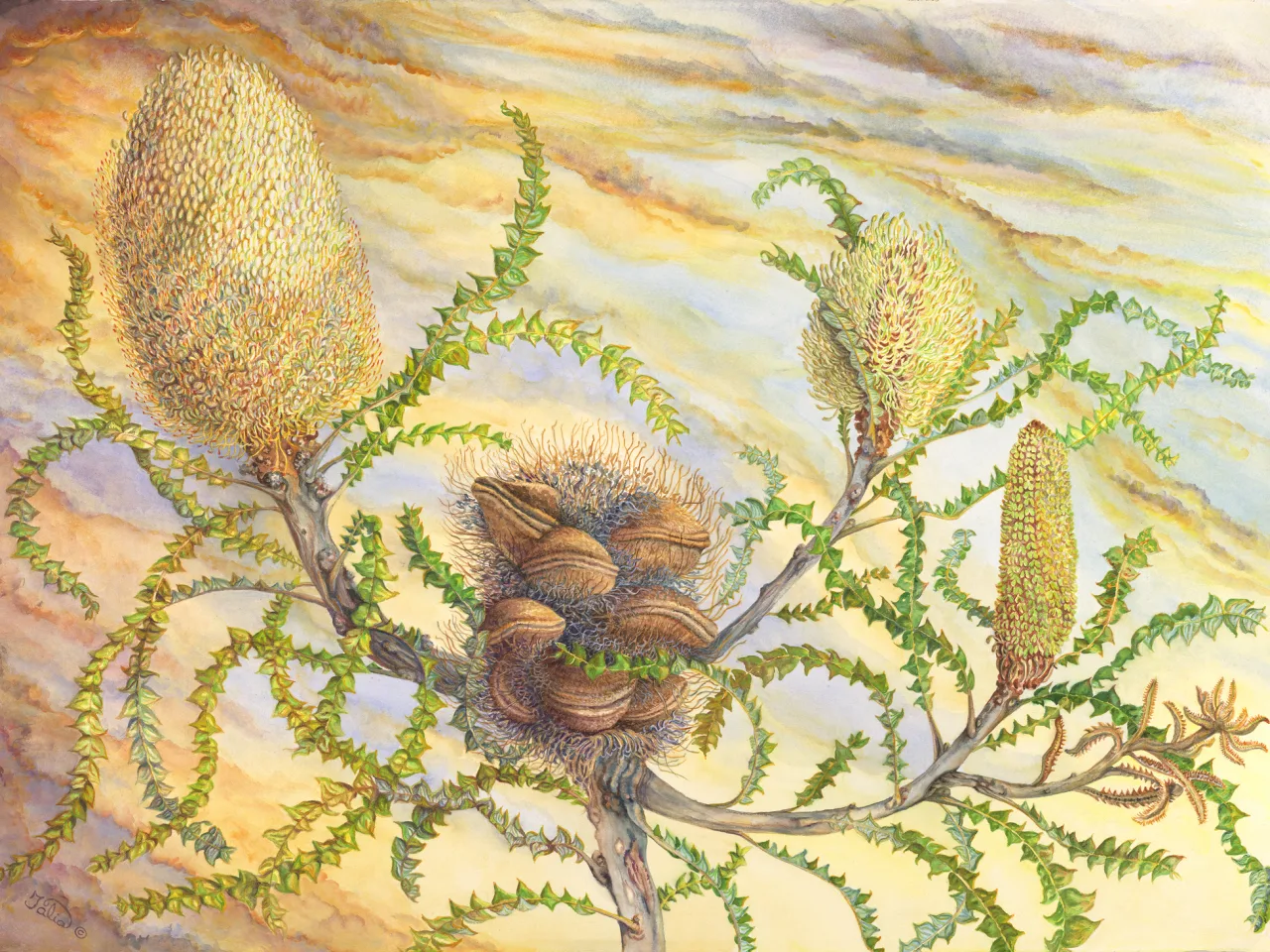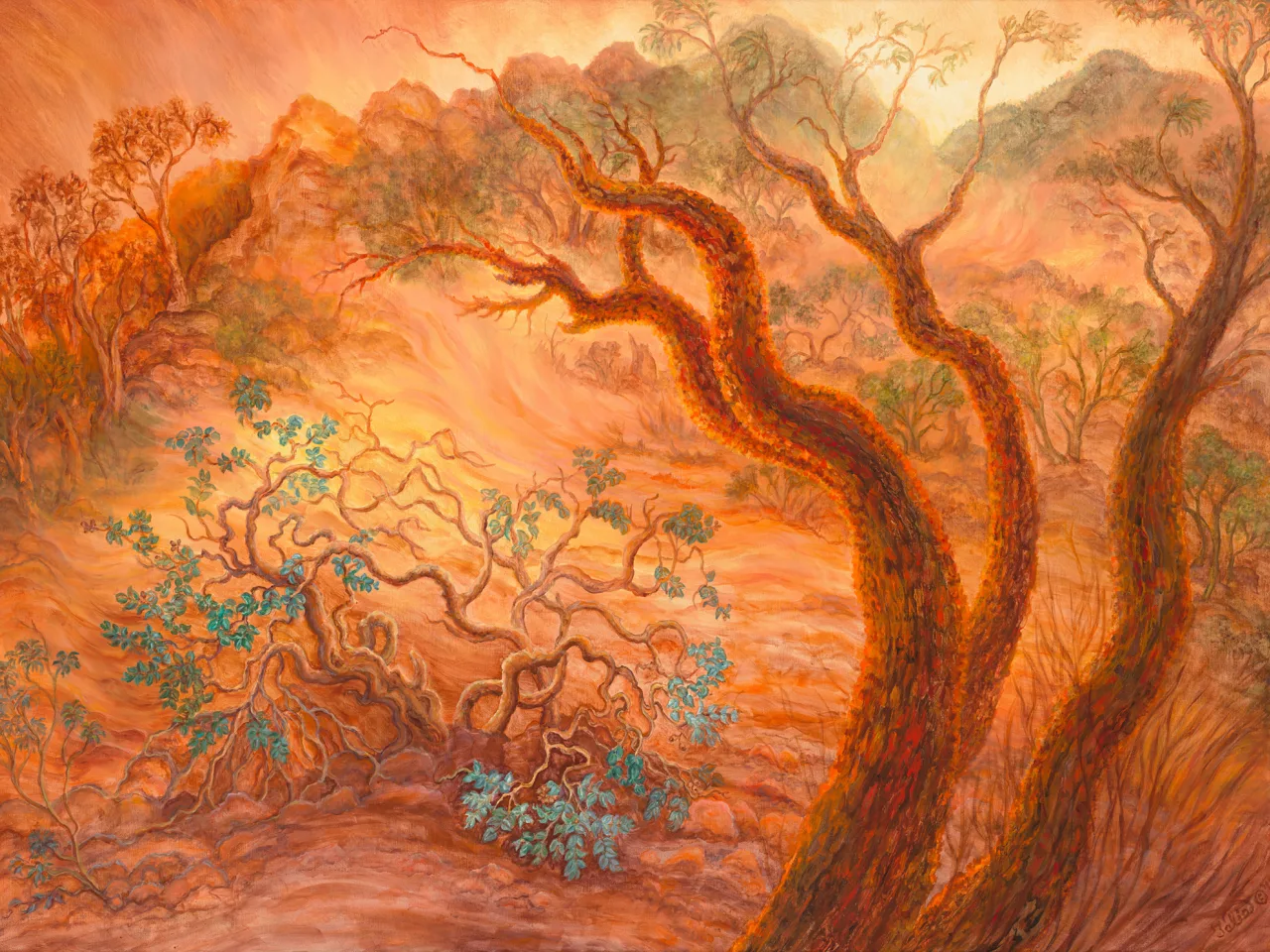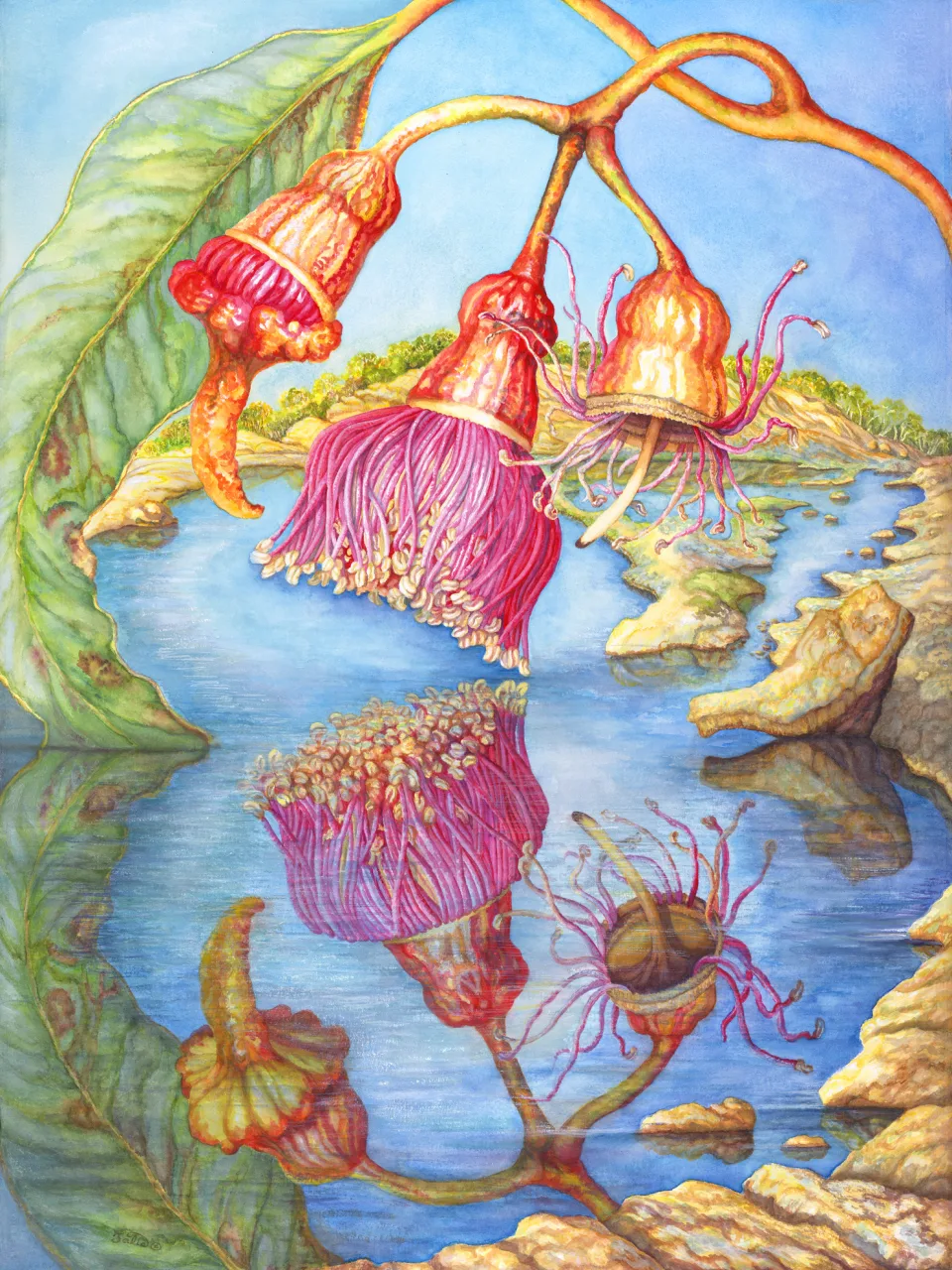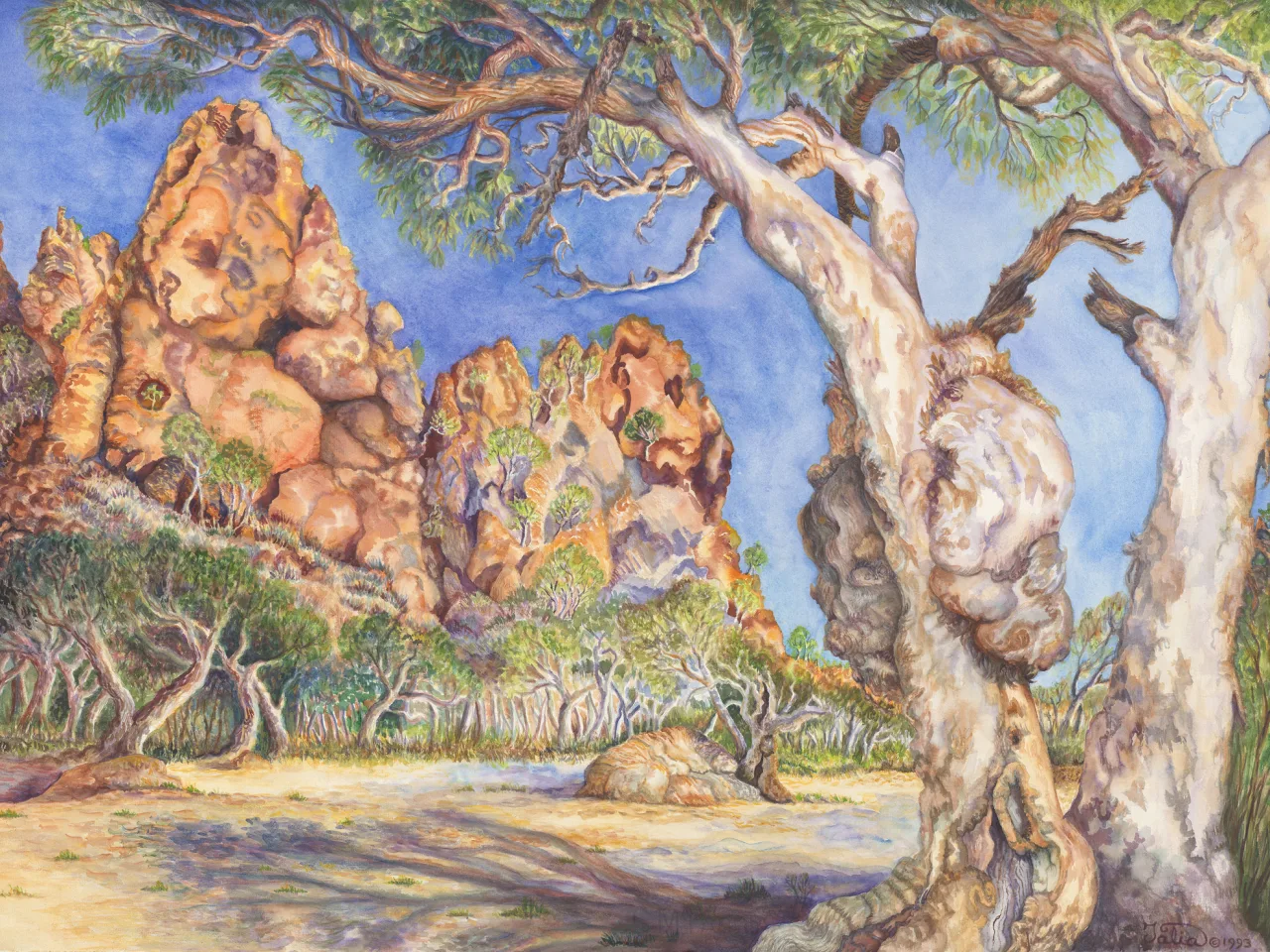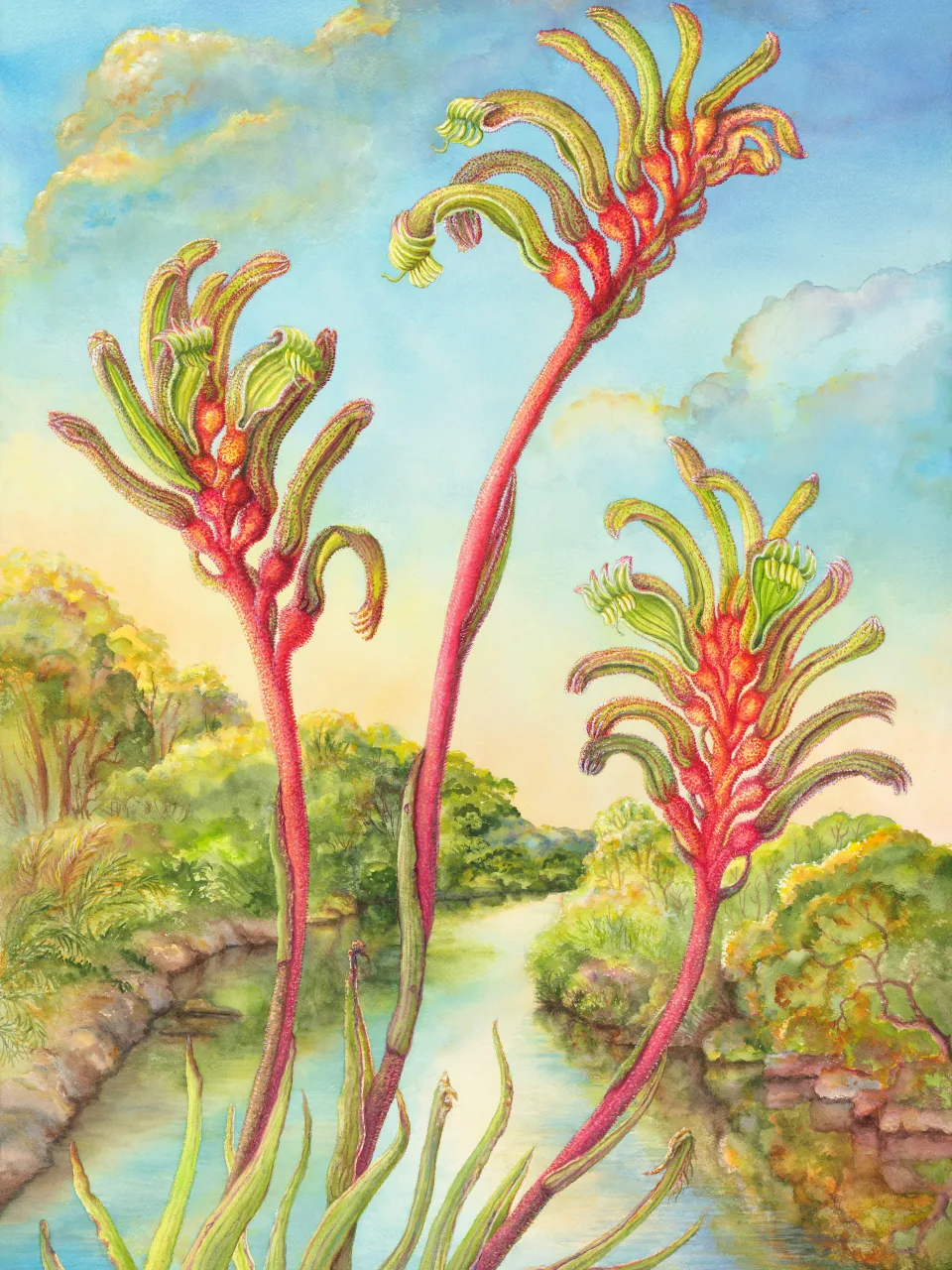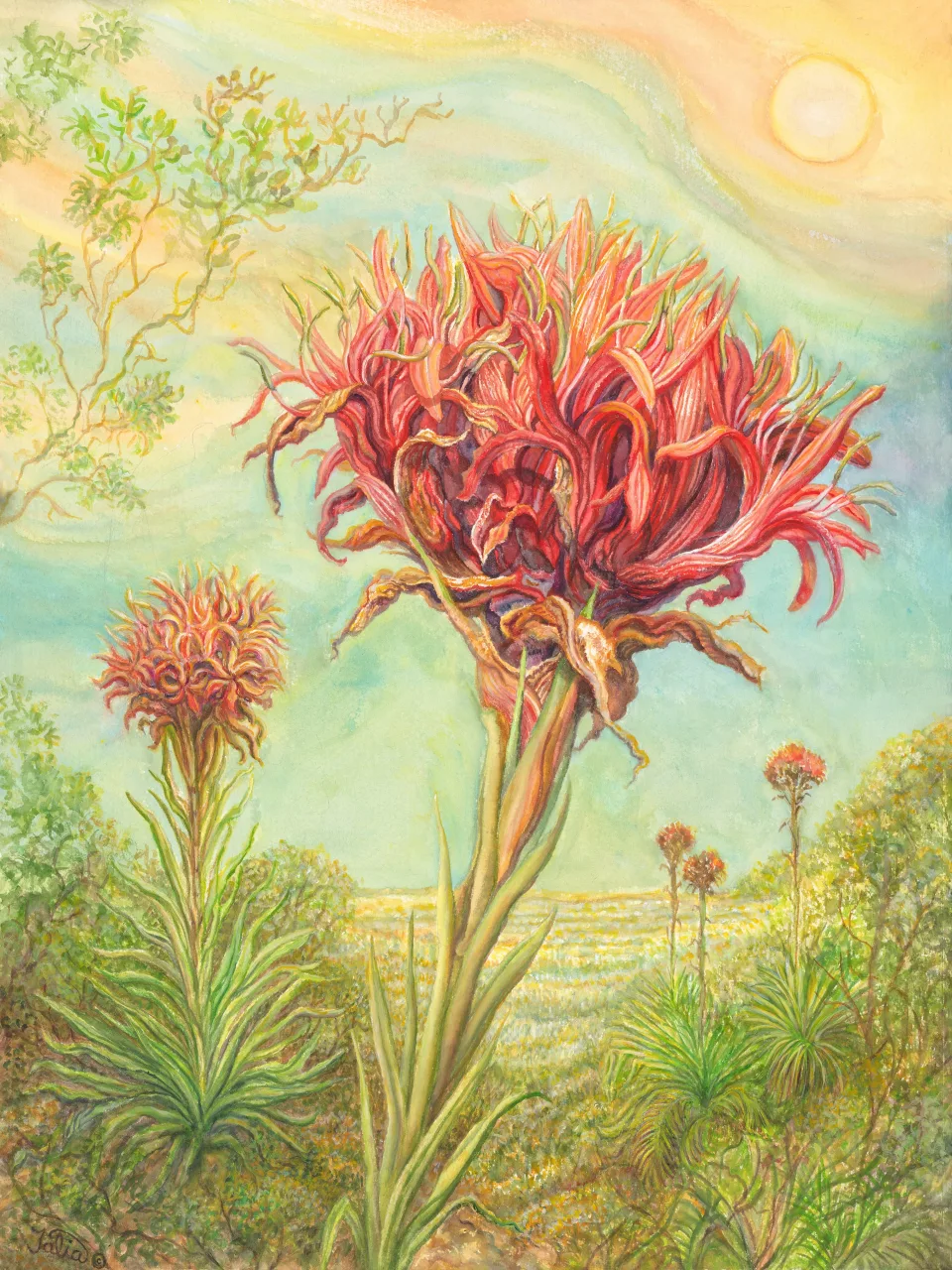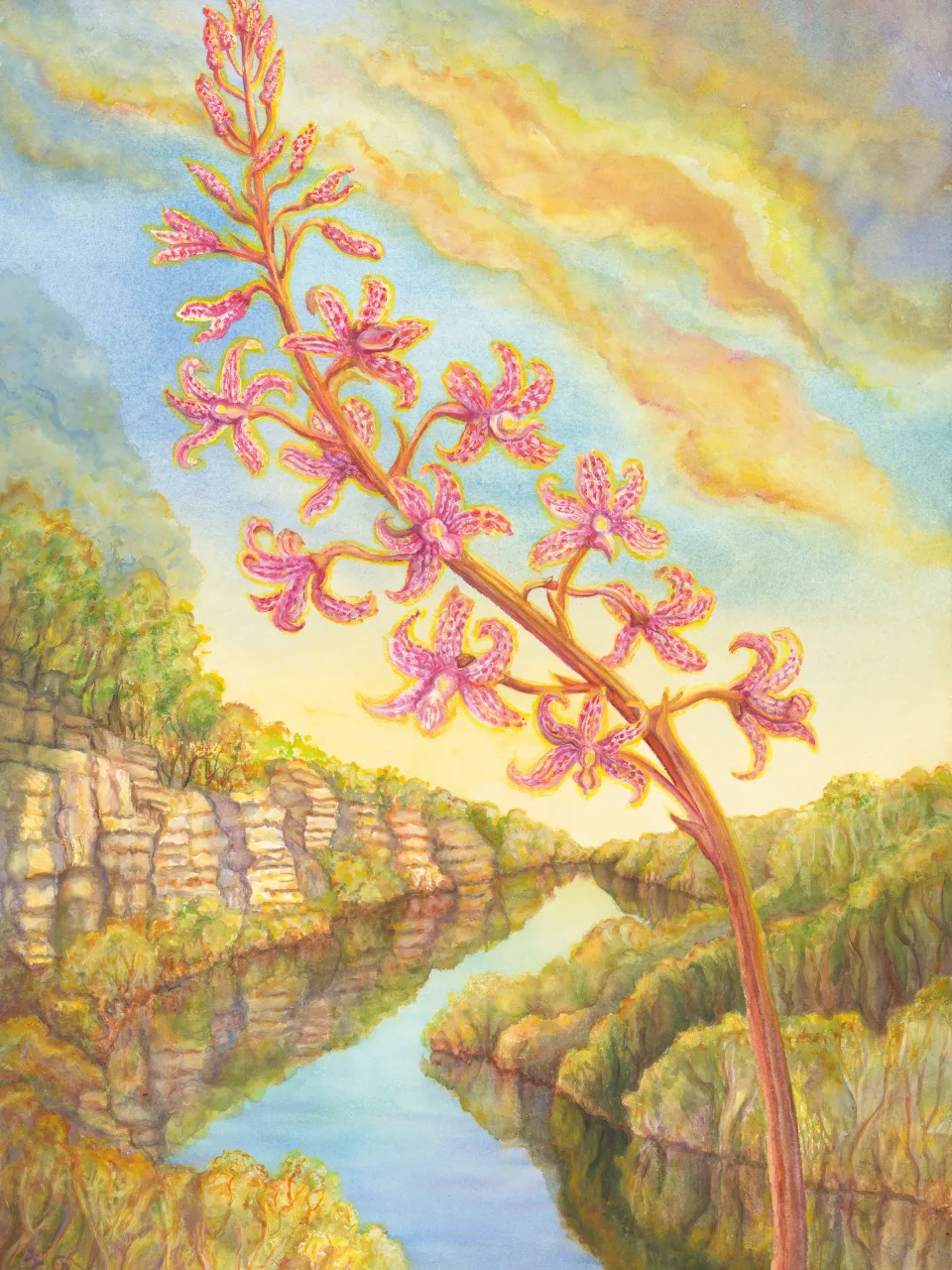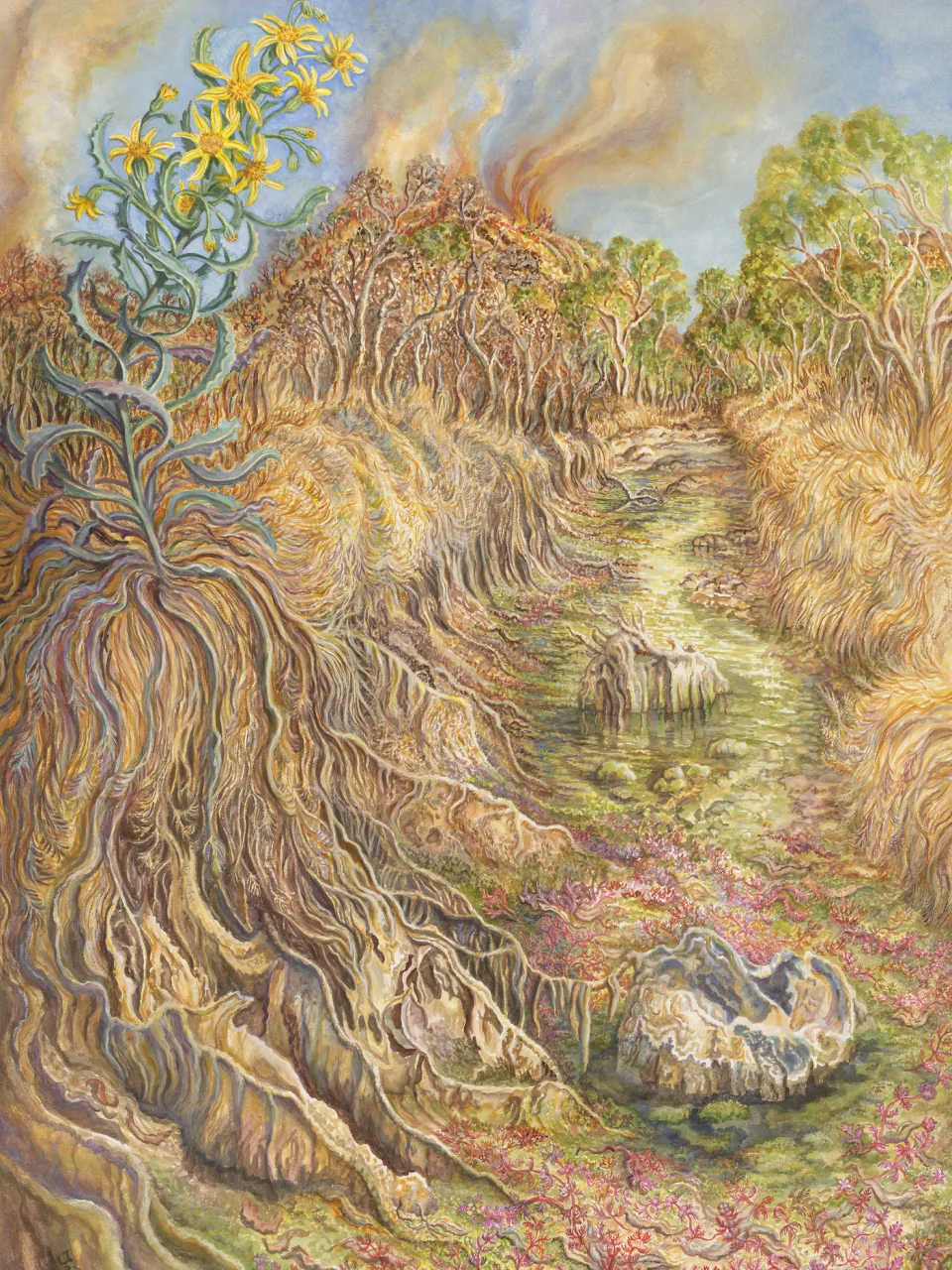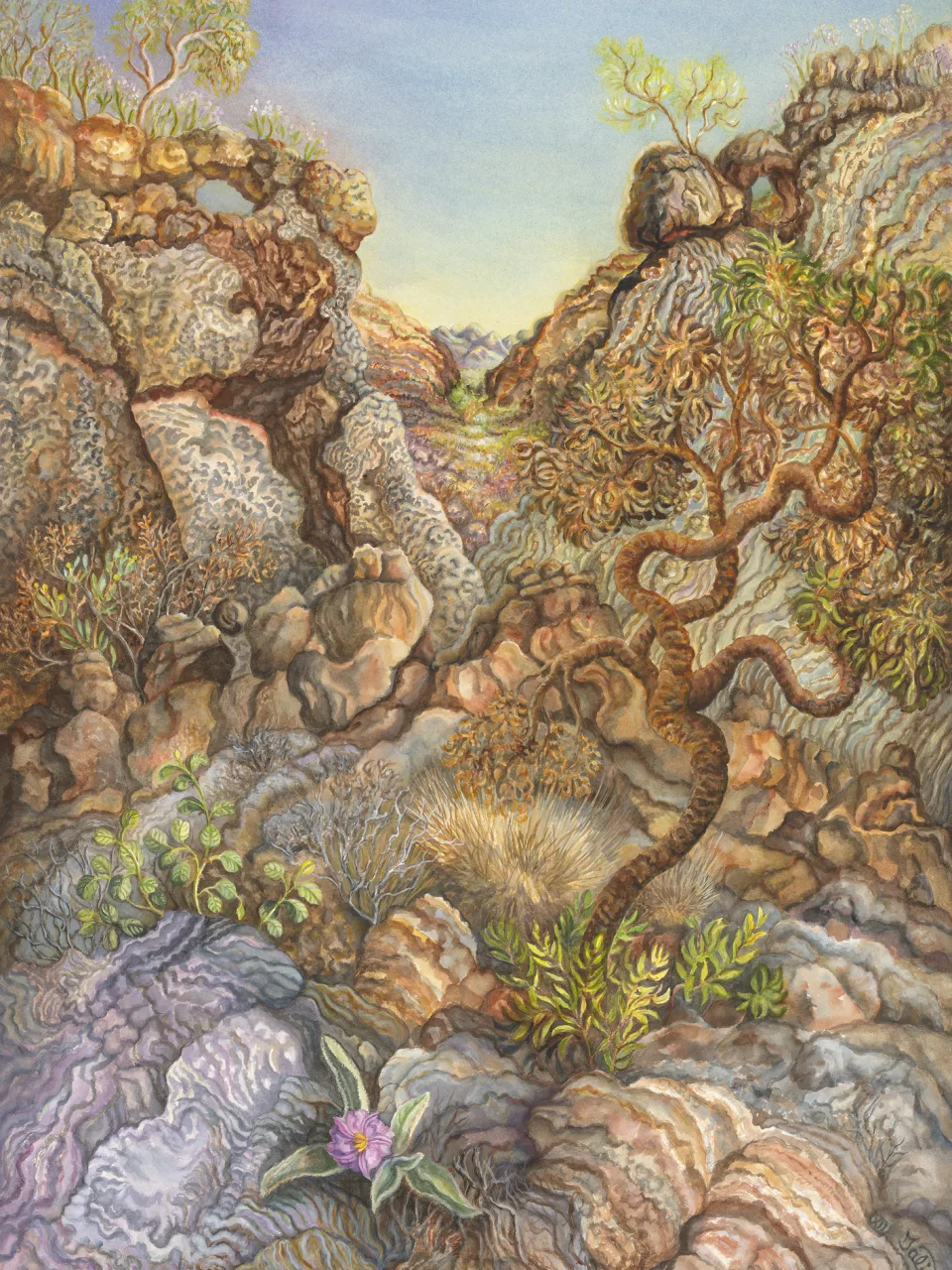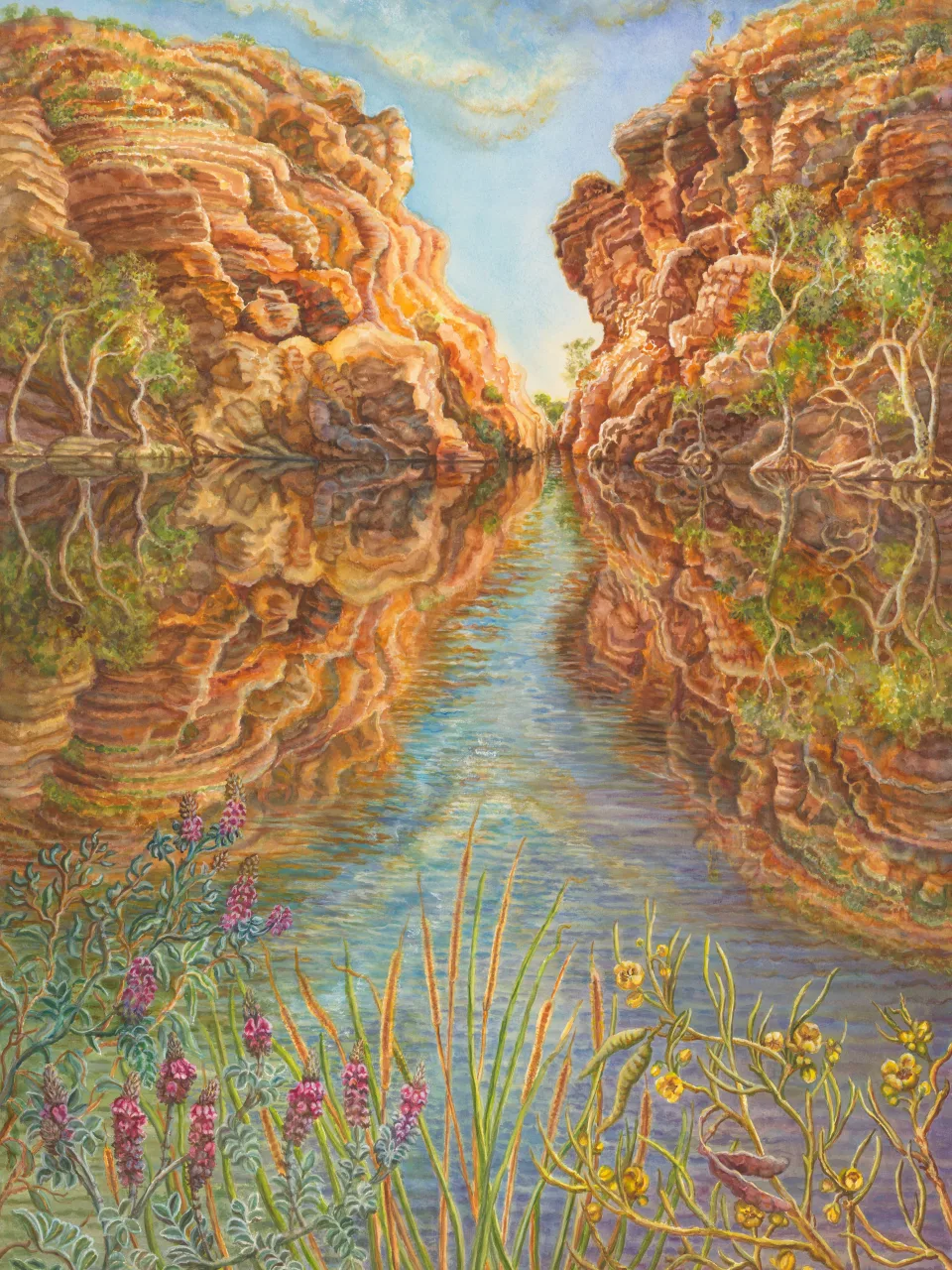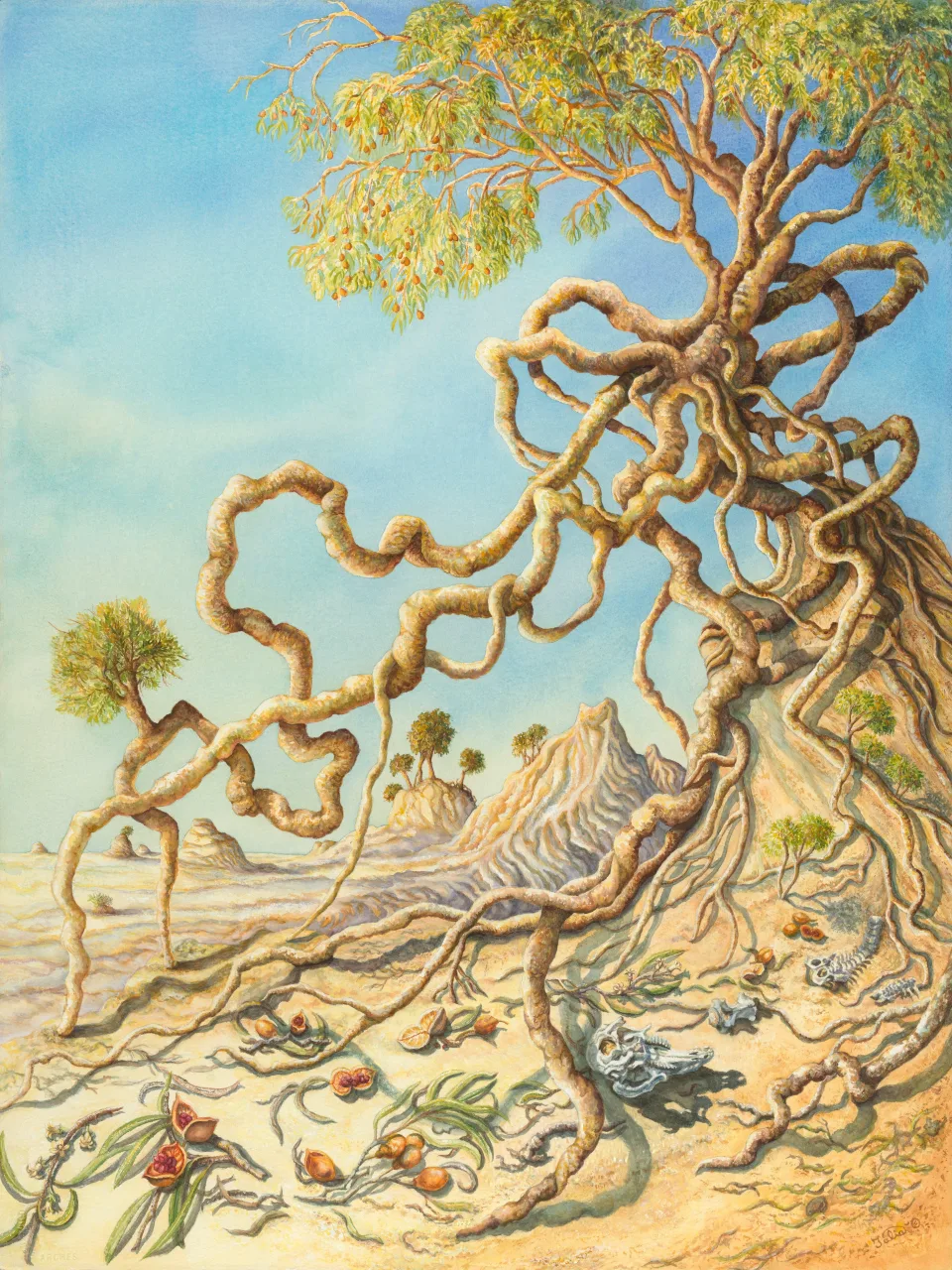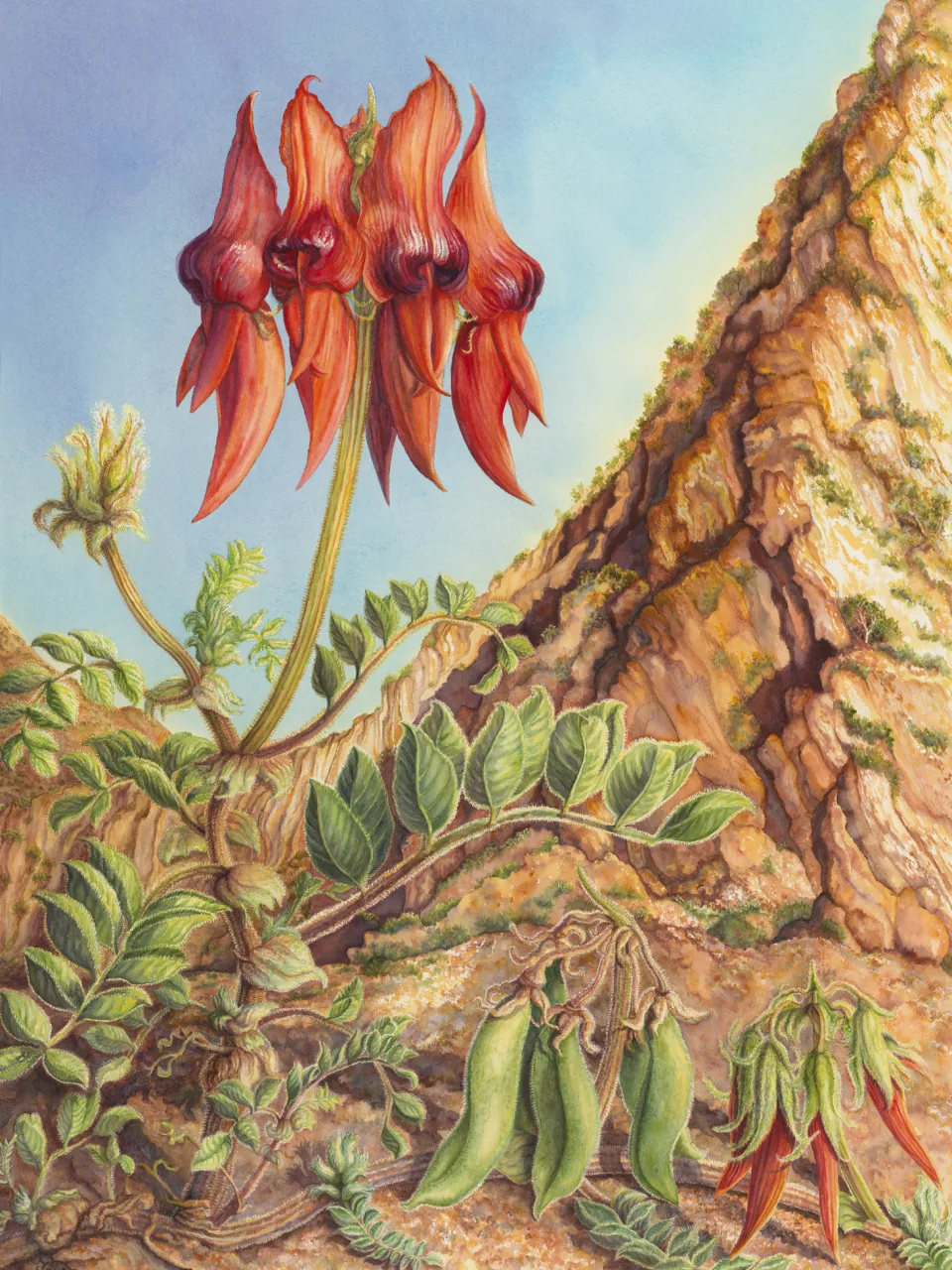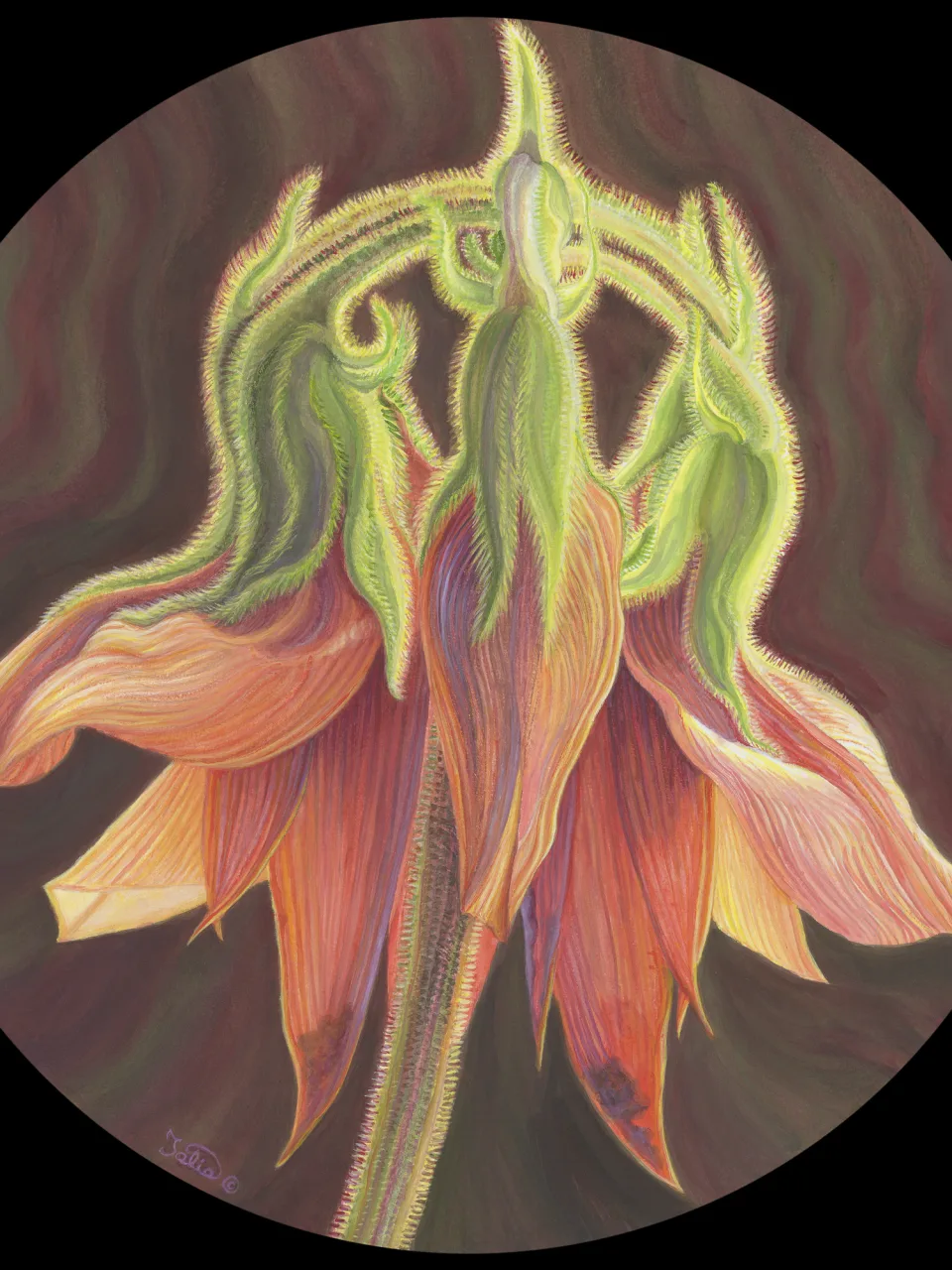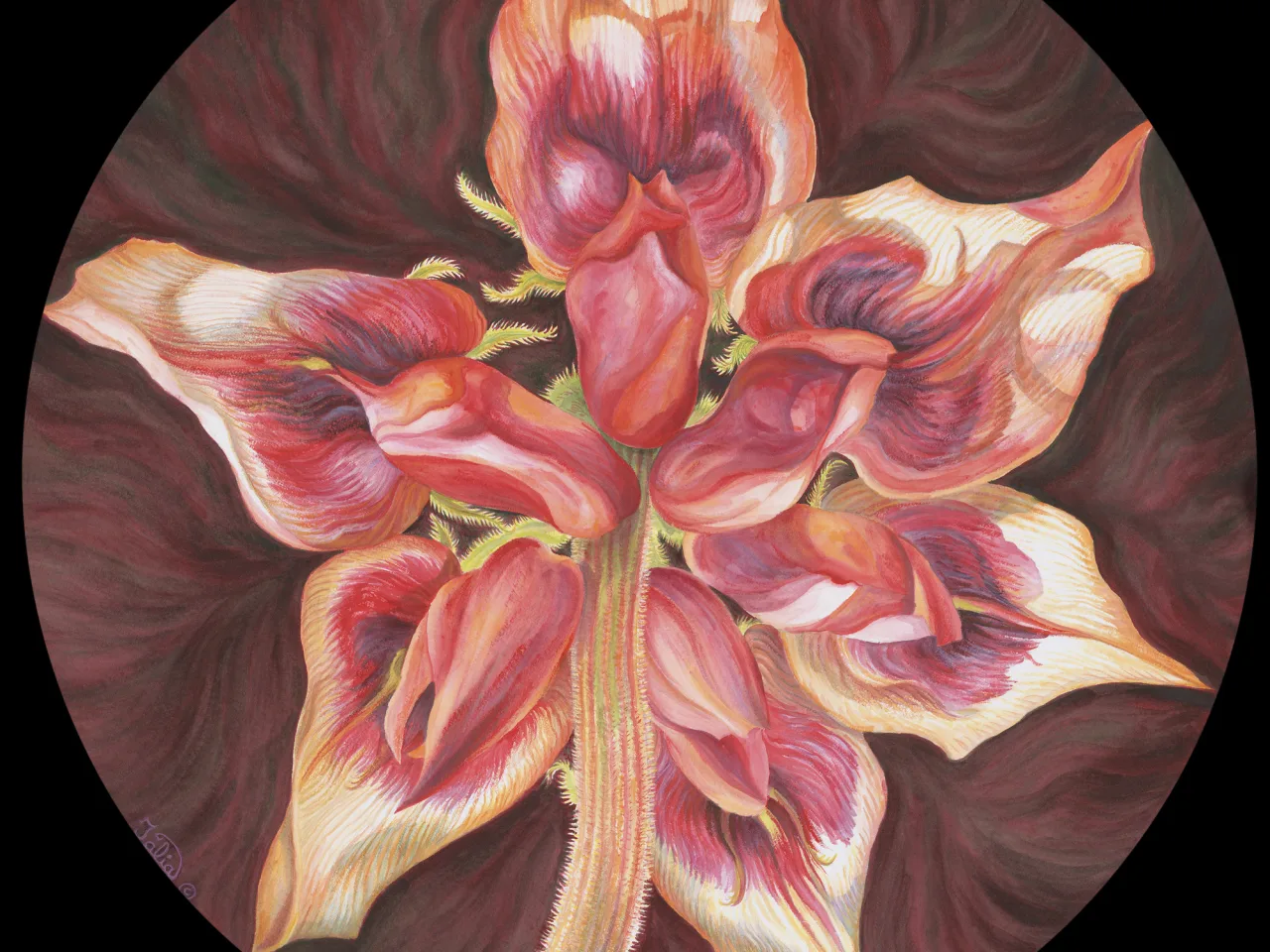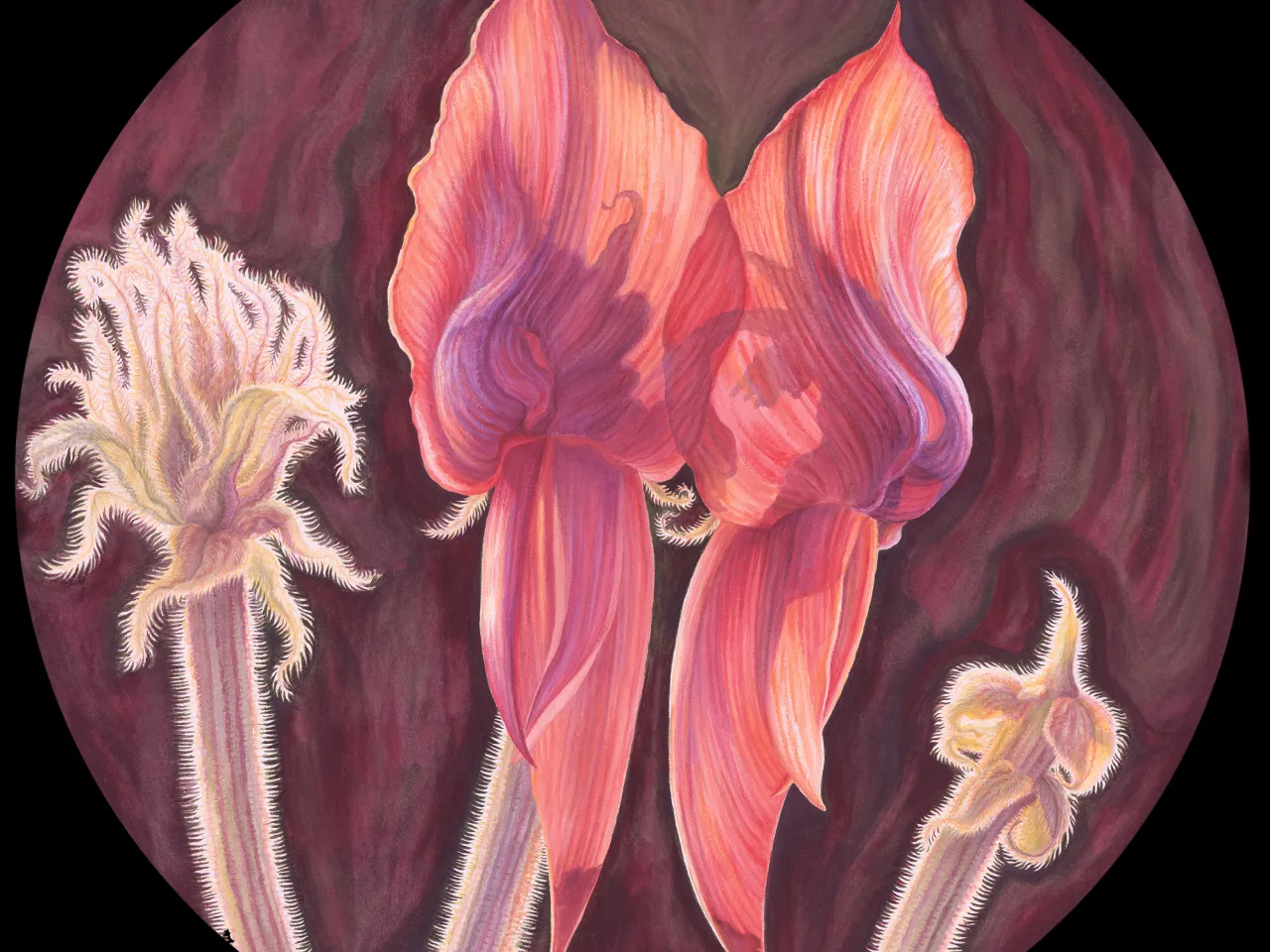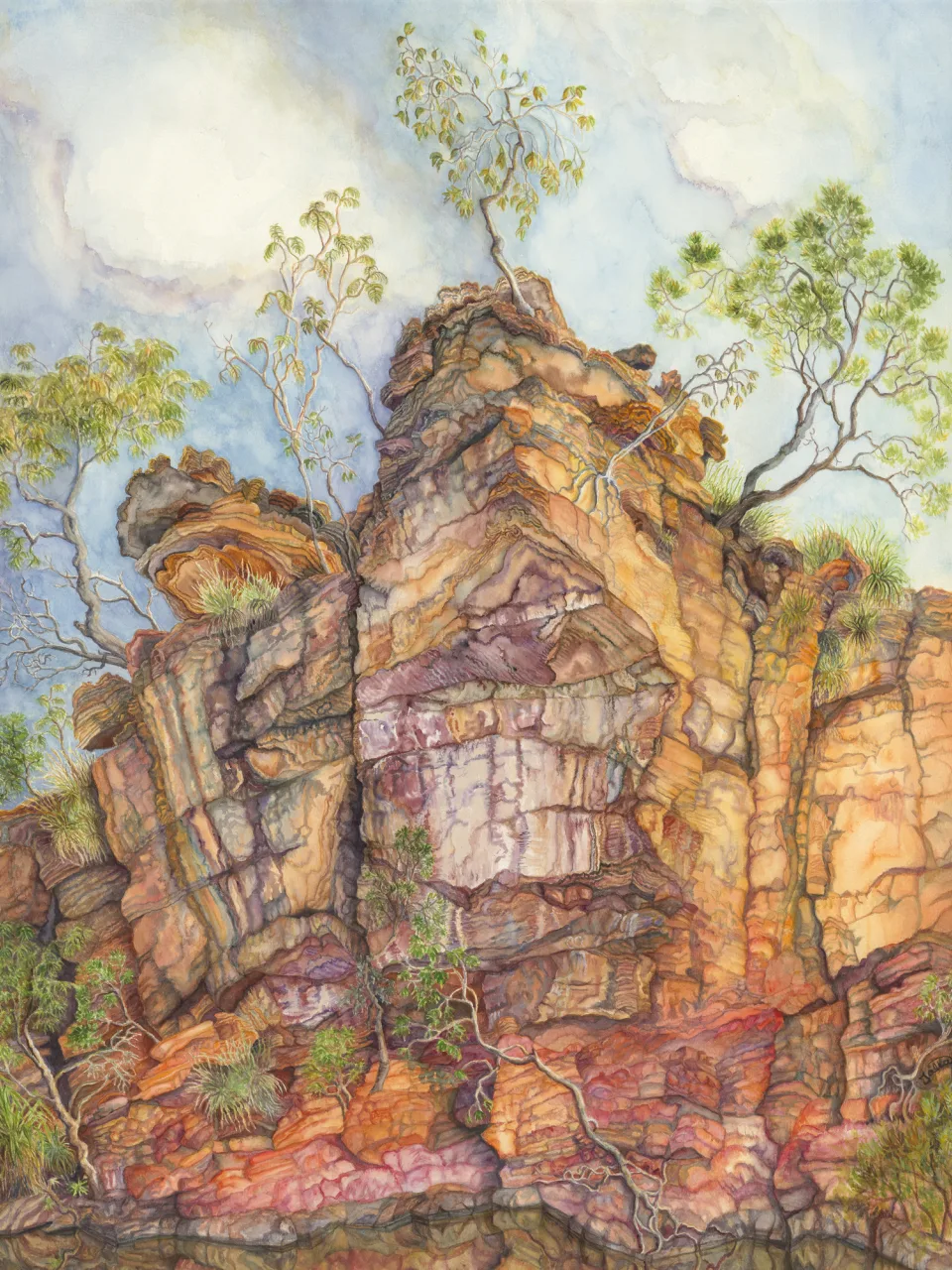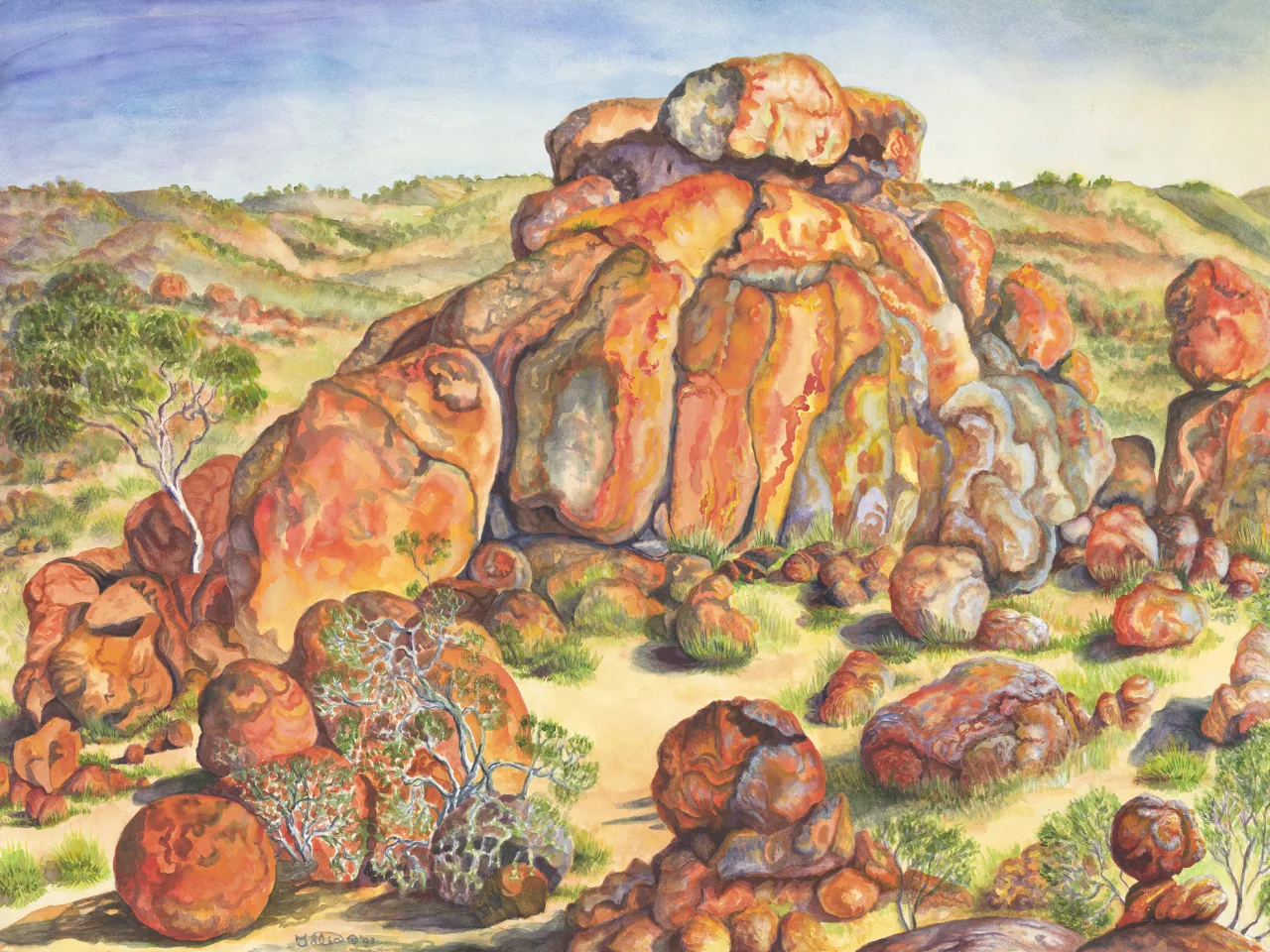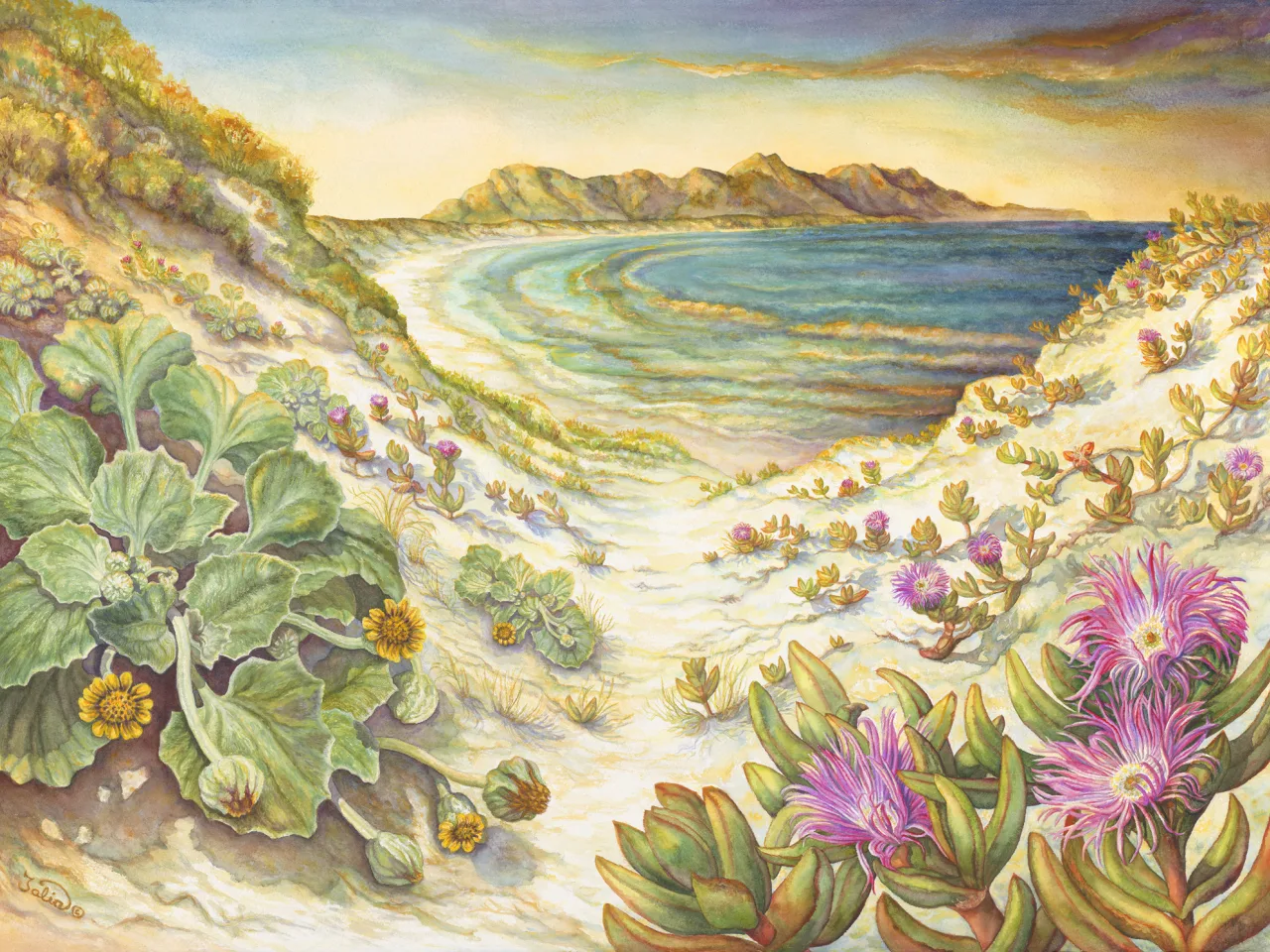Artwork 49A Black Kangaroo Paws at the Ancient Pinnacles, Nambung National Park, Western Australia
Section 28
Bizarre and Showy Australians with Gondwanan Ancestry—Kangaroo Paws, Grass Trees, Flame Lilies, and Orchids
Nambung National Park, Western Australia, Western Australia
- 1. Banksia illicifolia (holly-leaved banksia)
- 2. Helichrysum sp. (paper daisy)
- 3. Macropidia fuliginosa (black kangaroo paw)
- 4. Scaevola sp. (fan flower)
Artwork 49A
Buy a print
Limited edition giclee archival quality print on 310 gsm Ilford cotton rag (from an original work in watermedia on watercolour board, 68 cm high x 51 cm wide)
from the artist
The “black kangaroo paw” (Macropidia fuliginosa), which is quite distinctive in colouration, is a very special and rare Western Australian member of the family. This species is so unusual and highly restricted in distribution that it has an endemic genus to itself.
We were delighted to find it in sandhills near “the Pinnacles” and took many photos. This amazing plant appears black because its bright yellow-green colour glows through short black hairs, creating an illusion of black velvet on the unopened buds and underside of petals. By contrast, the black hairs are quite sparse over the opened petals so that they glow on the top like brilliant yellow-green velvet. These lovely open flowers attract and provide perches for their honeyeater pollinators.
Other great survivor plants in the windblown, sandy Pinnacles are the blue flowering Scaevola, yellow daisies (Helichrysum species), and one of our hardy banksias (Banksia ilicifolia) in the upper right—a variable species with flowers from yellow to dark yellow, becoming dark orange to brown as they age. All seek shelter and moisture runoff up against the Pinnacle formations.

